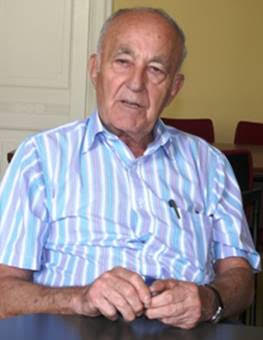
THE VOICE OF INTERNATIONAL LITHUANIA
|
VilNews has its own Google archive! Type a word in the above search box to find any article.
You can also follow us on Facebook. We have two different pages. Click to open and join.
|
Blog archive
- Posted by - (3) Comment
Olga Zabludoff: Reply to Donatas Januta re Holocaust in Lithuania (3)
I dare to hope that our debate
can build bridges to a better
understanding

Olga Zabludoff
Dear Donatas,
The last paragraph in your article of 8 November is a good place to begin my response. I concur that our differences of opinion as well as our areas of agreement should be viewed as an exchange of honest, healthy dialogue. I would even dare to hope that it can begin to build bridges to a better understanding of all the issues we wander into.
For a moment let’s forget about the Lithuanian economy during medieval times. It’s really hard to relate to. Let’s move forward to the more modern economy of the inter-war years. Yes, on the eve of World War 1 Lithuania was economically backward. But that had nothing to do with your claim that the Jews did not contribute to the economy. Like the rest of Eastern Europe at the time, economic development was lagging in Lithuania. Modern economic strides began in Western Europe much earlier than it did in Eastern Europe.
You speak of the Jews having had a monopoly as merchants, traders, shopkeepers and craftsmen. There was no such thing as a monopoly in these small and scattered operations. These were mostly mom-and-pop businesses run out of front rooms in their homes. Of course, like everyone else, they tried to get the best prices they could, but to speak of anti-trust laws and anti-price-fixing laws is totally out of context for that environment.
Another point of importance is that Jews had little choice but to make their living as merchants and traders. Traditionally they were excluded from other occupations and professions. For example, my father had studied engineering in St. Petersburg only to discover when he returned to Lithuania that it was impossible for a Jew to find employment as an engineer. Instead, he became a bank manager in the Jewish Peoples’ Bank.
I still think you are underestimating the contributions of the Jews to the Lithuanian economy, so let me quote from an article which appeared in the Lithuania Tribune of 12/23/10 during the visit of Prime Minister Andrius Kubilius to Israel:
“Prime Minister Kubilius has agreed that the Lithuanian history is unimaginable without the Lithuanian Jewish community that has left a deep imprint on our history and our lives. Since the times of Vytautas the Great, it has always been an integral part of the Lithuanian society, closely involved in the development of science, economy and culture.”
One major difference of opinion in our discussions concerns the definition of “genocide.” The term “genocide” was first applied in 1944 in regard to the attempted extermination of the Jews by Nazi Germany. It clearly refers to the systematic killing or extermination of a whole people. Obviously, and unfortunately, there have been other genocides, but the Soviet regime did not liquidate the majority of Lithuanians. That the Soviets committed terrible crimes against the Lithuanians is a given, that the nation lost political leaders, army officers, clergymen and others is undisputed. But the Lithuanian population was very far from being exterminated.
To say that there were other genocides does not diminish the Holocaust, but to equate the Holocaust with events that were not genocides is to diminish the Holocaust. Comparing incomparables, equating unequals is a distortion of history.
I’m sure that Professor Dovid Katz can easily defend himself, so I won’t venture into that area. From reading his articles in the various media and on his website www.defendinghistory.com I have to assert that he is courageously outspoken and is probably feared and shunned by many in the Lithuanian government. But if they would only listen to him, I believe it would help them accomplish what they say they are sincerely trying to do: to improve their damaged relationship with their small Lithuanian-Jewish community and, consequently, with world Jewry.
Professor Katz analyzes politics and politicians from a vantage point that few other scholars have reached. He should be valued in Lithuania, not feared, if the government wants to deal with its Jewish problems in a realistic way to create a better tomorrow for themselves and their people.
- Bookmark :
- Digg
- del.icio.us
- Stumbleupon
- Redit it
- Posted by - (2) Comment
Donatas Januta: Reply to Olga Zabludoff re Holocaust in Lithuania
To say that there were other genocides does not diminish the Holocaust

Donatas Januta
Dear Olga,
Apparently, we agree that Jews and Lithuanians both suffered greatly during World War II. And we both agree that Timothy Snyder’s Bloodlands is an excellent book. But, there are still a few things that we don’t agree on. And I hope that we can disagree without necessarily imputing bad motives to each other.
I do not dispute Dov Levin’s claim that Jews were an integral part of Lithuania’s economy. But the Jewish lending of money to the Polish kings and other nobles that you brought up, which enabled them to continue their extravagant lifestyles at the people’s expense, had both a short-term and a long-term negative impact on the country and the lives of Lithuanians. Yes, the Jews were also mainly merchants, traders, shopkeepers and craftsmen. But to evaluate their contribution to the country’s economy in those fields is a little hard, because Jews had a monopoly in Lithuania in those fields, and it is acknowledged that all monopolies, with their price-fixing, stifling of competition, and other evils, generally have a negative impact on a country’s economy. That’s why in the US we have anti-trust laws, anti-price-fixing laws, etc. Lithuanians did not have any of those protections.
One result was that, after 600 years of Lithuanians and Jews living side by side, on the eve of World War I, Lithuania was an economically depressed and backward country. If I had to voice an opinion on whether the Jewish contribution to the country’s economy was positive or negative, I would say that at best it was a wash. I.e., the Jews kept their part of the machinery of the economy – such as it was - running during that time, but there were no noticeable gains or improvements, especially if one compares to the adjacent countries to the immediate West. But I am willing to simply say that Lithuanians and Jews lived peacefully side by side, but separate, for 600 years, that they interacted almost exclusively only in the marketplace, and leave it at that.
You say there was only one genocide, and to say something different is to distort the history of World War II. Yet, for someone to state that the Holocaust was the most terrible genocide in European history, but that there were other genocides as well, does not at all distort or diminish the significance of the Holocaust. Historian Norman M. Naimark, in his book Stalin’s Genocides, is not the only historian and social scientist who agrees that the generally accepted definition of genocide is wider than the narrow UN definition of the crime of genocide.
But let’s go back to the limited 1948 UN definition which states that the crime of genocide under the UN charter consists of acts which are committed with intent to destroy, in whole or in part, a national, ethnical, racial or religious group. Moscow’s intent, in which it succeeded, with respect to Lithuania, was to decapitate the nation. In the executions and mass deportations to the gulag of 1941, 1944-45, 1948-49, and 1951, the country lost perhaps 90% of its political leaders, army officers, clergymen, administrators, teachers, and other professionals. That was the Soviet intent, to destroy the leadership of Lithuania, so that they could easier eradicate Lithuania’s culture and history from the remaining population. As Molotov, or one of his henchmen, said “There will be a Lithuania, there just won’t be any Lithuanians.”
As I said, I hope that we can disagree on some things without imputing bad motives. For example, Dovid Katz’s article in the November 2, 2011, Jerusalem Post, does nothing other than perpetuate further disagreements and enmity between Lithuanians and Jews. It is exactly the kind of gratuitous demonization of Lithuanians that Yves Plasseraud deplored in his article which started this whole discussion of ours.
Lithuania voted against full Palestinian membership in UNESCO, i.e., voted in support of Israel’s position, so Dovid Katz states that that vote is merely an example of Lithuania’s “duplicity”, and uses that as an opportunity to trot out his full arsenal of attacks against Lithuania. If, of course, Lithuania had voted the other way, against Israel’s position, Katz would then have said that the vote showed Lithuania’s “antisemitism”, and then written the same article against Lithuania. We can never win, can we? I expect the next time that Katz reads about the price of fish in Lithuania, he will say “What duplicity, the Lithuanians are talking about fish just to divert attention from the suffering of Jews”, and will again write the same article.
As in all societies, there have been good people and bad people on both sides, but I believe that the majority of Jews and of Lithuanians have always been good people. And though, Lithuanians and Jews lived side by side but separately, there were times when significant numbers of each consciously helped one another for the common good. One of those times was at the beginning of the Lithuanian Republic in 1918-1925, when Lithuanian Jews helped Lithuania attain independence, and Jews received a large amount of autonomy within the country. But that’s another story (see, e.g., Šarūnas Liekis, A State within a State?).
We both agree that Jews and Lithuanians suffered greatly during World War II. We both agree that the Holocaust was the most terrible genocide in European history. So, I hope that even though we disagree about some of the terminology, i.e., the term genocide, or some of the other sub-issues, that we can view our disagreements as simply differences of opinion.
- Bookmark :
- Digg
- del.icio.us
- Stumbleupon
- Redit it
- Posted by - (2) Comment
Olga Zabludoff: Reply to Donatas Januta re Holocaust in Lithuania
I love and respect Lithuanians no less than I do my American friends, both Jews and non-Jews

Olga Zabludoff
Dear Donatas,
Thank you for your gracious opening paragraph to our discussion. I will try to comment on the points you raise in your letter.
I do not dispute Dina Porat’s finding that 99.5% of the Lithuanian population was neither directly nor indirectly involved in the killing of Jews. I would not dispute the findings of any reputable researcher/historian. But what I wish to point out is that one-half of 1% of the 1941 Lithuanian population equaled about 15,000 persons. Looking at the Jewish population of about 200,000 at the time, the ratio between killers and victims was 1: 13.
That can account for high efficiency. The real problem was that the other 99.5% of the population chose to close their eyes.
"All that is necessary for the triumph of evil is that good men do nothing." This quote from Edmund Burke is the painful truth in the story of the Holocaust as well as other major tragedies. But to ask in hindsight why good men did nothing means not to comprehend the climate and the terror of the times.
No one is blaming innocent Lithuanians. I think the anger and the constant memory stem from the distortion of the history of what really took place. If only the true history were presented by teachers and texts, if only the Lithuanian people accepted the truth, I think the healing process would begin and an honest reconciliation would follow. Again I am not claiming that all Lithuanians do not accept the truth. There are certainly many notable exceptions.
Regarding the contributions of the Jews to the economy of Lithuania, if you choose not to believe Professor Dov Levin’s claims that Jews were an integral part of the economy, then let’s take a common-sense approach to the subject. The Jews were mainly merchants, traders, shopkeepers, craftsmen. They stimulated the economy with their businesses and provided a marketplace for farmers and others who needed to sell their produce and wares. Lithuania was one country and one economy. All of the participants in that economy made contributions, whether they were Jews, Lithuanians or other ethnic groups. They lived side by side, and even though the various groups carried on their individual traditions, there were still all part of one whole.
Contrary to what you are implying about my reaction to Bloodlands, I think it is an excellent book and everyone should read it. I went to Timothy Snyder’s presentation at George Washington University shortly after the book came off the press. It was extremely interesting and impressive to hear him speak and answer the myriad questions from the audience. I bought the book right there and later read it. Why would I have quoted from the book if I believed it is not a valuable work?
As for the Kazys Skirpa radio broadcasts reported in Bloodlands, if you say that this reference proved to be incorrect and has been deleted from subsequent printings of the book, I take your word for it. But that in itself doesn’t change the fact that there were bloody pogroms in Lithuania even before the Germans had arrived. This has been reported countless times in survivor testimonies and historical accounts. It ushered in the Holocaust in Lithuania. Another fact that has been reported for 70 years by survivors, witnesses and historical accounts is that the Germans received all the help they needed from Lithuanian locals who were eager accomplices.
I find it very sad when you say, “I still don’t know why the Lithuanians can’t simply grieve their own tragedy, and the Jews grieve theirs.” All people should grieve over tragedies that involve the loss and suffering of others and should mourn the victims, regardless of their nationality or race. It seems cold and indifferent to separate out who should be mourned by whom.
During my three lengthy trips to Lithuania, I have made deep and lasting friendships with a good number of Lithuanians. I love and respect them no less than I do my American friends, both Jews and non-Jews. I cannot imagine that my Lithuanian friends could ever live in a different compartment of my heart.
In your final sentence you write, “The Lithuanians and the Jews both suffered greatly during World War II – or do you disagree with this as well?”
How could I possibly disagree with the truth? You can even go further and say the Lithuanians suffered beyond World War II during the second Soviet occupation that lasted almost fifty years. But there is one major difference: the goal of the Nazi regime was total annihilation of European Jewry – genocide. They came close to succeeding in Lithuania. The Soviet regime imposed deportations, imprisonment, death and suffering on the Lithuanian nation, but the majority of the Lithuanian population survived. While many perished in Siberian gulags, larger numbers eventually returned home to Lithuania. Both the Nazi and the Soviet regimes were heinous, but there was only one genocide. That fact should be acknowledged so that the history of World War II will not become distorted.
Olga Zabludoff
- Bookmark :
- Digg
- del.icio.us
- Stumbleupon
- Redit it
- Posted by - (2) Comment
Donatas Januta: Reply to Olga Zabludoff re Holocaust in Lithuania
Why can’t the Lithuanians simply grieve their own tragedy, and the Jews grieve theirs?

Donatas Januta
Dear Olga:
Of the numbers of Lithuanian Jews that were killed in 1941-1944 I have seen several numbers, all of which were around 90% or more. If you feel more comfortable with 95-96%, I won’t quarrel with you. The fact is that any such number is an enormous number, and it was and is a great tragedy. If there was anything that I could do to undo it, I would.
But you don’t seem to dispute the Israeli historian Dina Porat that 99.5% of the Lithuanian population was neither directly nor indirectly involved.
As for your claim that the Jews contributed “enormously” to Lithuania’s economy and culture, you quote that wealthy Jews lent money to the “Lithuanian authorities” when they got into financial trouble. But that was in centuries past, and those Lithuanian authorities were either individual warlords, or the Polish kings of the joint commonwealth, who got into personal financial trouble due to their extravagant lifestyles. And all those Jewish loans then went into their own private pockets. And, of course, the Jewish lenders did not act solely out of a sense of charity; they received more than a quid pro quo. The Lithuanian nation, i.e., the people of Lithuania, however, did not benefit at all from letting those same “Lithuanian authorities” continue living their extravagant lifestyles, at, ultimately, the people’s expense. That's why those Jewish "contributions" to the Lithuanian nation's economy were, as I said, either ziltch, or perhaps less than ziltch.
And what about the “enormous” Jewish contributions to Lithuanian culture that you mentioned. I am waiting to be enlightened on what it is you think they were.
Regarding your criticism of my “interpretation” of Timothy Snyder’s “Bloodlands”, all that I said was that it is a very good book, and everyone should read it. So, are you saying that it is not a very good book, and people should not read it?
As for your quote from “Bloodlands” (pp. 191-192) regarding Kazys Skirpa and his so-called radio broadcasts urging bloodshed, I understand that the author has acknowledged that that is incorrect, that he was relying on someone else’s research, who was either mistaken or simply falsified it. The author has advised that in subsequent printings of the book, that reference has been deleted. If you like, check with him yourself.
I still don't know why the Lithuanians can't simply grieve their own tragedy, and the Jews grieve theirs. I did not start this dialogue, but was merely replying to Didier Bertin and yourself. As I said, before, the Lithuanians and the Jews both suffered greatly during World War II - or do you disagree with this as well?
- Bookmark :
- Digg
- del.icio.us
- Stumbleupon
- Redit it
- Posted by - (7) Comment
Mr. Januta twists facts and figures
to suit his arguments

Olga Zabludoff
By: Olga Zabludoff
Washington, DC, USA
Mr. Januta’s article goes right to the heart of the problem: the tendency of critics like him to accuse others of being misinformed and of misstating facts. Indeed it is Mr. Januta who twists facts and figures to suit his arguments. Even when his facts are “correct,” they are simply half-truths.
For example: Yes, there is a Holocaust Museum in Vilnius, but to compare the pitiful little hidden building (the Green House) with the state-of-the-art Museum of Genocide located on a major street is like comparing a mouse to an elephant.
It hardly pays to argue with Januta because his reasoning is obviously skewed and his facts distorted. For example: 95-96% of the Lithuanian-Jewish population was murdered in the Holocaust in Lithuania. His figure is 90%.
In his book Professor Dov Levin speaks of two evils -- but of only one genocide, another confusion in Mr. Januta’s mind. Furthermore, his ridiculous claim that the Jews of Lithuania contributed “zilch” to the economy and culture of the country is contradicted by Dov Levin in his book: “The majority of the Jewish population worked at every possible trade, serving not only their own community but also the population at large.” (Introduction, p. 11) Even going back to the Middle Ages, Dov Levin writes: “On more than one occasion, when the Lithuanian authorities got into financial (or other) difficulty, the country’s wealthiest Jews came to their aid with generous loans or grants of credit.” (p. 44) “The Jews’ deep penetration into the Lithuanian economy also created extra employment for the general population.” (p. 50)
Januta’s interpretation of Timothy Snyder’s Bloodlands is an injustice to the author’s careful research and articulate writing. Here is an excerpt that Mr. Januta obviously missed:
“The Germans arrived in Lithuania with their hand-picked nationalist Lithuanians and encountered local people who were willing to believe, or to act as if they believed, that Jews were responsible for Soviet repression. The Soviet deportations had taken place that very month, and the NKVD had shot Lithuanians in prison just a few days before the Germans arrived. The Lithuanian diplomat Kazys Skirpa, who returned with the Germans, used this suffering in his radio broadcasts to spur mobs to murder. Some 2,500 Jews were killed by Lithuanians in bloody pogroms in early July.
“As a result of trained collaboration and local assistance, German killers had all the help they needed in Lithuania.” (pp. 191-192)
No need to say any more. fdfdg says it all in his Comments.
- Bookmark :
- Digg
- del.icio.us
- Stumbleupon
- Redit it
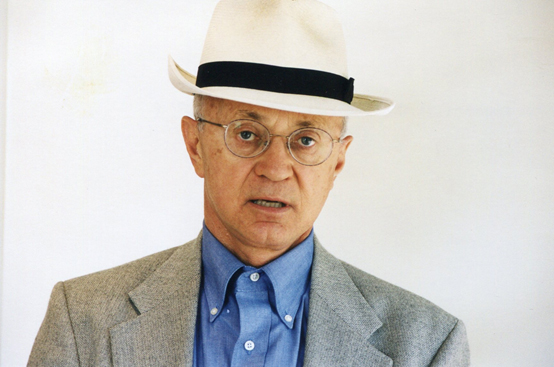
By Donatas Januta
Mr. Didier Bertin is either woefully misinformed or intentionally misstates facts in his “reply” to Yves Plasseraud’s article “Lithuania and the memory of the Shoah (Holocaust)”.
He refers to the crimes of Hitler and Stalin as the “Double Genocide” theory, states that the comparison of the two is initiated by Lithuania and/or its government, and that the reason for it is to somehow minimize the tragedy which the world’s Jews suffered during the Second World War. But the comparison between the tragedies brought by those two psychopaths, Hitler and Stalin, is not of Lithuanian origin or usage at all.
Mr. Bertin chooses not to give credit where credit is due. The comparison between Hitler’s and Stalin’s crimes was first made and thoroughly analyzed by the prominent Israeli historian Dov Levin, in his book “The Lesser of Two Evils”. Three things are clear to anyone who has read Dov Levin’s treatise: (1) Levin was definitely and scrupulously comparing the two, as he inevitably had to do to arrive at his conclusion which of the two was the lesser evil. (2) He was evaluating the two evils solely from the Jewish perspective, and in his conclusion he uses the word “lesser” not in the universal sense, but only with respect to the effect upon Jews. (3) Because Levin, even in the title of his book acknowledges, that there was not one but two evils – if there was only one, there would have been nothing he could have compared it to – that still leaves two for analyzing their effect on the rest of the world.
Levin did not use a modifier to describe the effect of the two evils on non-Jews i.e., he did not state whether as to non-Jews the two evils of Hitler and Stalin were or were not equal, or similar, or equivalent. But neither does Lithuania. I have not run across the Lithuanian government or Lithuanians using the term “Double Genocide”.
Lithuania’s position is simply – you grieve for your tragedy, and we will grieve for ours. Just as every person, every family, so every nation, every ethnic group, is entitled to grieve for their own separately from the grief of others, so are the Jews, the Ukrainians, the Cambodians, the Armenians, and others. So are the Lithuanians.
Bertin further states that Lithuanians are not entitled to use the word “genocide” at all in reference to their own tragedy because “Lithuanian people still exist and are active in Lithuania”, i.e., that Hitler’s, and Stalin’s, attempts to wipe them out were not successful. Yet, he refers to the killings of Armenians, Rwandans, and Cambodians as being “real genocides”. But Armenians in Armenia, Rwandan’s in Rwanda, and Cambodians in Cambodia also still exist and are active in their countries, are they not? (Bertin conveniently forgot to mention the genocide of the Ukranians, which, of course was perpetrated by that “lesser” of the two evils.)
Yes, 90% of Lithuanian Jews were killed during World War II. And, yes, there were some German-organized Lithuanian militias or “Lithuanian auxiliaries” who participated in some of those actions. But how many Lithuanians were in those “Lithuanian auxiliaries”? The Soviets during that period also had a Division, the 16th Rifle Division, which they referred to as the “Lithuanian 16th Rifle Division.” But because most soldiers in this “Lithuanian” division did not speak Lithuanian, the commands were given not in Lithuanian, but in Yiddish and Russian. So, just how “Lithuanian” was this 16th Soviet Division were commands were given not in Lithuanian but in Yiddish and Russian? And how “Lithuanian” were those “Lithuanain auxiliaries” which partook in German-organized and German-led killing of Jews?
Here is a quote from testimony of an ethnic Pole, a member of one of those “Lithuanian Auxiliaries”, also referred to as “Special Detachments”, which testimony is in the possession of the US Justice Department’s “nazi hunting” department, the Office of Special Investigations (OSI):
The Pole, Jan Borkowski, testified how the Russian Dolgow recruited him into the German organized “Lithuanian Auiliary”: „Dolgow and I entered the building through Wilenska Street and went to the second floor... In my presence [someone] personally filled out my name in the questionnaire in Lithuanian and I signed it after Jan Dolgow had translated it to me. My name in the questionnaire was written in Lithuanian as Jonas Barkauskas, son of Ignas. The questionnaire also included my date of birth, rank in the Polish army, and similar information. That day I also received a certificate stating tha I was employed in the Special Detachment and that I had a right to possess a firearm... I received an identification card, filled in Lithuanian.” (Protocol of Interrogation of a Suspect – Jan Borkowski, 29 January 1973, U.U. v. Dailide, Document 580–655, Bates No. 07821–07823.”
Borkowski further admitted that he participated in executing Jews at Ponary, that he has no remorse in having participated, but he expressed regret for having worn a Lithuanian uniform while doing so: „I was ashamed, however, that I was a Pole and had to put on the uniform of the bourgeois Lithuanian army.” (Bates No.07882).
And should the fact that Lithuania was one of the few, and perhaps the only, German occupied country where the Germans, despite repeatedly trying, did not succeed in establishing a local ethnic SS, should that not give pause for thought as well?
Just a bit more of statistics. According to Israeli historian, Dina Porat, about 0.5%, i.e., half of one percent, of the entire population of Lithuania was involved directly and indirectly, i.e., whether prison guards, drivers, etc., in the killing of Jews. (And how many of your French, Mr. Bertin, were involved in rounding up France’s Jews and shoving them into railroad cars heading straight for Auschwitz?) Porat does not however state how many of that 0.5% were Jan Borkowski, Jan Dogow, and similar “honorary” Lithuanians. The number of Lithuanians who have been identified as having, at the risk of their own lives, saved Jews from the Holocaust, is on the same order of magnitude.
Bertin’s statement that Lithuania is the sole country that “tries to prosecute Holocaust Survivors and members of the resistance against Nazis” flatly contradicts the facts. In 2007, the Polish government forwarded information and asked the Lithuanian government to investigate the slaughter, on January 29, 1944, by Soviet partizans/bandits of Polish and Lithuanian civilian villagers at Kaniukai (“Koniuchy”). Those partizans/bandits were not just anti-Nazis, their main goal was to bring Stalin’s communism, with its demonstrated terror, back into Lithuania.
Here is testimony of two of those “anti-Nazi” Soviet Jewish partisans regarding their actions at Kaniukai. Abraham Zelesnikow: “Partisans came around the village, everything was torched, every animal, every person was killed. And one of my friends, acquaintances, a partisan, took a woman, put her head on a stone, and killed her with a stone.” Zalman Wylozni: “the entire village of 80 farmsteads was burned to the ground and its inhabitants were murdered.”
The villagers were slaughtered because they defended their and their families’ lives and livelihoods, as the partizan/bandits have themselves admitted: Joseph Harmatz: “We came in like bandits and, after all, we were robbing the local peasants of their livelihood. . . . Gradually the villagers ... became our enemies.” Rakhil Margolis: “I could not stomach going to [these “requisitioning” expeditions]. I was so ashamed of entering a cottage and demanding from the peasants potatoes, flour, especially livestock – sheep, cows. The women cried, the men cursed. . . . there were many “underworlds” types in our detachment – former thieves and swindlers for whom robbery was an habitual thing.”
So, on the basis of Poland’s request and this type of information, the Lithuanian government sought to question, not to prosecute, but merely to question as witnesses, some of the admitted witnesses in that indiscriminate slaughter of civilian villagers. The result was an almost hysterical reaction from Efraim Zuroff and his followers, claiming that Lithuania was persecuting Holocaust survivors.
If someone wants to learn historical facts, and not just listen to political polemics based on red herrings like the so-called “Double Genocide” theory, you should read professor Timothy Snyder’s “Bloodlands” about the conditions in Lithuania and Easterm Europe during World War II. Or better yet, start with Israeli historian Dov Levin’s “The Lesser of Two Evils.”
At the end of his article, Bertin, reminds us that many Russian soldiers died fighting the Nazis, as if Lithuanians should be thankful to the Russians. But if Russia’s Stalin had not signed the infamous non-aggression treaty with Hitler in 1939, where Stalin gave Hitler free hand to invade and occupy Poland, and to thus start World War II, those Russians would also not have needed to die. And the tragedy of the Holocaust might not have occurred either. So, go ahead, Mr. Bertin, do thank the Russians.
There are other incorrect and misleading claims in Didier Bertin’s, as well as in Olga Zabludoff’s, “reply” to Yves Plasseraud. Like the simple fact that in addition to the Genocide Museum of the Lithuanian tragedy, there is also nearby in Vilnius a Jewish Holocaust Museum, which is funded by the Lithuanian government and administered by the Lithuanian Jewish Community, and which covers exclusively the Jewish tragedy of World War II.
And, please, Olga, spare us your crocodile tears under your fancied claim that the “contributions” of Jews “to Lithuania’s economy and culture were enormous” and that the Lithuanian government is ignoring it. The contribution of Jews to Lithuania’s economy and culture, over the 600 years that they lived in Lithuania, was either zilch or less than zilch. Let me explain.
Lithuania, on the eve of World War I, was as backward a country as the rest of the Russian Empire. Due to the Czarist Russian empire’s occupation and oppressive colonialism policies for over 100 years, Lithuania’s economy was depressed, it was an agricultural economy, but with Lithuanians being barely more than subsistance farmers. Its culture was marked by almost total illiteracy, due to Russia’s restrictions on the use of the Lithuanian language. I have no idea what Olga Zabludoff has in mind when she refers to the “enormous” economic and cultural contributions of the Litvaks to the Lithuanian nation. There were none. Lithuania was economically and culturally exploited and oppressed.
For 600 years Litvaks lived side by side with, but separate from, Lithuanians. Indeed, Jewish historians have noted that of all of Europe’s Jews, those of Lithuania interacted the least with the ethnic people among whom they lived. And they have further noted, that this self-insulation allowed the Jews to maintain, preserve and develop their unique culture with the least amount of outside influence. A number of Jewish scholars note that the Jews in Lithuania were able to do this, because they considered the Lithuanians inferior to them.
Zabludoff also laments that Lithuanians are striving to preserve and extol their own history without simultaneously extolling the history of its Jews. And how much time do Jews devote to preserving or extoling Lithuania’s history when they extol their own? If the small country of Lithuania doesn’t beat its own drum, there is noone else who will do it for them.
Litvaks, are certainly neither unknown, nor ignored, nor hidden from the world, nor do they lack anyone to beat their drums. Litvaks’ vast contribution to world knowledge, science and the arts over the last 100 years probably has no parallel in any other group. And we have all benefited from their talents and intellect. But this has happened in the last 100 years in the West. It was not the case in Lithuania for the 600 years up to World War II. Lithuanians were peasant farmers, Jews were urban merchants and tradesmen. Their cultures did not intermix.
And certainly it should not be surprising if the small country of Lithuania, as Zabludoff says, cannot appease far-right extremists, if such a prominent scholar like professor Timothy Snyder is unable to do so. Just look at the attacks by Efraim Zuroff and his followers on Snyder’s book “Bloodlands”, which otherwise has received an extremely favorable reception throughout the world.
The Jews of Lithuania and the ethnic Lithuanians both suffered terribly during World War II. But, just as they had lived for 600 years, side by side but separate, so they suffered their tragedies separately. Thus, it may be that Lithuanians and Jews will never agree on the events of World War II, because they are each viewing them from a separate reality. But that should not be cause for playing fast and loose with historical facts, as Diedier Bertin and Olga Zabludoff, have done.
- Bookmark :
- Digg
- del.icio.us
- Stumbleupon
- Redit it
- Posted by - (6) Comment
Lithuania and the Holocaust, a comment to the Didier Bertin article:
Lithuania cannot appease
both world Jewry and
far-right extremists

Olga Zabludoff
By: Olga Zabludoff
Washington, DC, USA
I commend Didier Bertin's knowledgeable and sensitive observations in his article "Lithuania and the Memory of the Holocaust." My comments here are more in the form of a PS to Mr. Bertin's words. My take-off point is his reference to the term “Double Genocide,” a government-endorsed concept that has been bandied about in Lithuanian political circles in recent times. But more about this later. Mr. Bertin borrows the term for application in a different dual context: the original genocide of the Jewish people and the current movement on the part of the Lithuanian government to neutralize if not to obliterate the remembrance of the Holocaust.
Last week I visited a photographic exhibition at the Rayburn House Office Building on Capitol Hill in Washington, DC. Sponsored by the Embassy of Lithuania, the exhibit was titled "The First Lithuanians in Texas." The introduction to the exhibit explained that because the first Lithuanian immigrants to the United States had quickly assimilated into the mainly German community in which they had settled, their contributions to the economic and cultural development of Texas have never been recognized or commemorated. These first Lithuanian immigrants to the US constituted a small group of Evangelical Lutherans from Lithuania Minor who arrived in Yorktown, De Witt County, in South Texas in 1852.
The exhibit is based on more than 30 years of archival research and will travel and has traveled extensively. The research into this ethnic group's migration has triggered the erection of historical markers by historical commissions, numerous articles in the press, archives implanted in the San Antonio Institute of Texan Cultures and the Balzekas Museum of Lithuanian Culture in Chicago -- all this to preserve the memory of, to recognize and to honor the contributions of, the first Lithuanian immigrants to the US.
That is actually very worthy and commendable. They are preserving and extolling a true history of a small segment of their ancestry. But what I find ironic is the double standard: the expression of such national pride in their legacy in the US while simultaneously often omitting the memory of a once-thriving Lithuanian-Jewish community (except in events intended as PR for Jewish, American and other Western audiences). The Litvak community existed for centuries throughout Lithuania. Its contributions to the nation's economy and culture were enormous. Yet the living remnants of that community, which include Holocaust survivors who had heroically resisted the Nazis, are currently being harassed and hounded by the Lithuanian government; while 96% of the last of the Litvak population lies mainly in mass grave sites that have melted into the landscape. In many cases the markers to these killing sites, put up thanks to Britain's Lord Janner, were placed to be invisible from the adjacent main roads.
Having said this, it would not be entirely fair and balanced if I failed to mention the various initiatives of the Lithuanian government in recent times – initiatives focused on repairing the Jewish problems they face both in their country and with world Jewry in general.
The year 2011 has been proclaimed a Holocaust Commemorative Year in Lithuania, but the goodwill inspired was sadly more than counterbalanced by the parliament's proclamation of a second commemorative year, one which in effect honors the killers, the members of the Lithuanian Activist Front and other "national heroes" who began to butcher Jewish neighbors in dozens of towns before the Germans had even arrived. It is morally incongruous to issue simultaneous years of commemoration -- one for the victims, and one for the local participants in the genocide -- and expect to have any good come of it for the country.
In early July memorial ceremonies were held at the mass grave in Ponar (Paneriai), where more than 70,000 Jews from the Vilna (Vilnius) area were murdered in the Holocaust. The following week a commemoration was held at the killing site in Plungyan (Plunge), where 1800 Jews had been murdered. Both events were attended by Lithuanian dignitaries and foreign visitors who were embarrassed and appalled to discover that the memorials at these killing sites had been freshly desecrated. The filthy anti-Semitic graffiti was quickly covered up and cleaned up, but not a single arrest has been made and all mention of the desecration was avoided. These crimes of hatred appear to go uninvestigated in any serious way. And so it is with many of the “goodwill” gestures of the Lithuanian government: what it does with one hand it undoes with the other.
One has to question also the motives of the government in what appears on the surface to be an improved attitude toward their tiny Jewish minority, toward the Holocaust in general and other issues which interest world Jewry. But Lithuania’s new politics of the Holocaust is only one step up from revisionism: They are now marketing a new concept – “Double Genocide” -- that equates the suffering and annihilation of the Jews under the Nazi regime with the pain and oppression of the Lithuanian people under the Soviet regime. In fact, they created a commission within their government to arrive at, and to export, these findings.
Cynical as it seems, I have to conclude that the motives of the government are more self-serving than soul-searching. Lithuania is out to improve its tarnished image in the world, especially as a member of the European Union. Strong nationalistic views dominate the society while their tiny Jewish population doesn’t carry much political weight.
It is a difficult balancing act, one that may not be possible. Until Lithuanian leaders realize that they cannot appease both world Jewry and far-right extremist factions simultaneously with two-track politics, their future will be as scarred as their past. I continue to live in the hope that enlightened Lithuanian people will themselves find the voice and courage to stand up proud and tall against the double-game policies of their government that are doing so much damage, and which could so rapidly be turned into constructive energy for partnership and genuine reconciliation.
|
Olga Zabludoff is an editor-writer having worked for the Macmillan Company in New York and the National Association of Educational Broadcasters in Washington, DC. She has compiled, edited and written books and articles on the Holocaust. Her parents were Lithuanian Jews. Olga has made three extensive trips to Lithuania. She lives in Washington, DC. |
- Bookmark :
- Digg
- del.icio.us
- Stumbleupon
- Redit it
- Posted by - (12) Comment
Reply to the article of Mr. Plasseraud published in VilNews in October 2011
Lithuania and the memory
of Holocaust
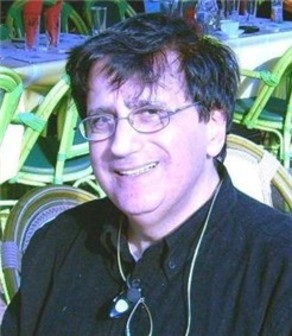
By Didier Bertin, President of the Society for the Promotion of the European Human Rights Model (France)-14 October 2011
We love Lithuania and its wonderful and precious language and fine people! The sole acute problem of Lithuania might be its government.
There is still a lot to do in this country for Human Rights Organizations like fighting Racism, antisemitism, Homophobia and promoting education and free information as the corner stone of democracy for a member-State of the European Union.
Mr. Plasseraud reminded important criticisms which could be made in Lithuania and that he does not share despite they are true in our opinion: The obliteration of the participation of Lithuanian militias in Pogroms and Holocaust, the “current” authorization of Nazi Parades and the creation of a new concept which put in equivalence of the Holocaust and the suffering of people under communist dictatorship whose consequence is the arbitrary second ranking of the Holocaust. This concept is named double Genocide and made a mathematical equality between events, which has no sense in History. In fact this concept aims to obliterate or reduce one of the two components of the equation, which is clearly the Holocaust as this can be seen in Lithuania.
As a matter of fact the Vilnius Genocide Museum displays only facts on the Soviet oppression and we were personally told by a member of the Staff that for “the Jewish things” we have to go to the green hut named “Green House”, which is a very poor small a museum in a wooden hut and which at last refers to the Holocaust. This so called museum is as difficult to find as the Holocaust in the Lithuanian History. However and on top of these negative facts many others were forgotten were forgotten by Mr. Plasseraud.
We were also shocked by similar substantial obliterations in the museum of the 9th Fort in Kaunas. We had also the opportunity to check the content of a History school book of a 15 years old Lithuanian schoolboy and we noticed that it was far from the richness of our French school books. The History school book we saw was very slim and presented an over- simplified version of events.
We understood that the bad treatment of History was deeply rooted in Lithuania when we learned that the public relation manager of the Genocide Center associated to the Genocide museum and considered as “a “senior specialist” is the current leader of a Neo-Nazi organization.
96% of the Lithuanian Jews were killed in 4 years, which is the highest country rate of extermination of the Holocaust and of course 96% of the Lithuanian people were not killed in such proportion over a so short period and then were not victim of an equivalent genocide.
Lithuanian people still exist and are active in Lithuania when the Jewish people almost entirely disappeared. The double genocide is clearly a fake concept probably developed for ideological reasons. We are on the side of the victims of Genocides and we are thus opposed to the over-utilization of the word “Genocide” in order to preserve its real meaning. The over- utilization of this word obfuscates the responsibility of perpetrators of “real Genocides” as the Holocaust and the Genocides in Armenia, Rwanda and Cambodia.
Lithuania is the sole country of the planet, which currently tries to prosecute Holocaust Survivors and members of the resistance against Nazis during World War II. The reason for this harassment is that few of them are still alive and witnessed militias members participating to the holocaust while Lithuanian authorities want to consider them as resistants. Lithuanian authorities went too far in asking Interpol to hunt these heroes. Their last request to Interpol in order to hunt a very old Holocaust survivor in Israel was made at the end of August 2011 with of course no result but a lot of international protestations, which are detrimental for the whole people of Lithuania.
Lithuania is also the sole country on the planet to have legalized the display of the Swastika in
2010 and this is a shame for the whole European Union and provocation against European
Ethics. This sole fact is very eloquent and should lead Mr. Plasseraud to review his position.
The duly authorized Nazi Parades in Vilnius are totally intolerable in European Union and should also be considered as a provocation against European Ethics. A Member of Parliament as the above mentioned “Senior Specialist” of the Genocide center participated both with the mob to the last 2011 Nazi Parade in Vilnius.
In June 2011, a conference was organized by the Genocide center in the premises of the Lithuanian Parliament. The target of this conference among others was the rehabilitation of the LAF (Lithuanian Activist Front) who initiated with others the Pogroms that constitute the onset of the Lithuanian Holocaust.
The Lithuanian Activist Front –LAF and other participants took the opportunity of the withdrawal of the Red Army and the fact that the German Army did not yet arrived to barbarically murder 5 000 Jews in 5 days from 25 June to 29 June 1941 in the sole area of Kaunas ( similar events of smaller magnitude occurred in other cities).
The fact that “the Patriotic Youth” who currently utilizes the slogan “Thank God, I am white” is currently subsidized by the authorities as are other far rightist organizations, is another outrage against the terms of the Charter of Fundamental Rights of the European Union.
As a matter of fact there is a “Double Genocide” in Lithuania which is the genocide of the Jewish people and today the Genocide of the remembrance of their martyrdom.
Fighting for the remembrance of the martyrdom of the Jewish people cannot be called “gesticulations” as said Mr. Plasseraud but is a duty of anyone defending Human Rights.
We also want to respectfully remind readers that Russia was an ally during World War II, and despite Communism’s atrocious dictatorship we must not forget the sacrifice of the lives of
13.5 million Russian soldiers without which Western Europe might not have been easily freed from the Nazis by the other allies. If the Nazis were not defeated as they were, there would have been no Lithuania to regain its freedom in 1990/1991, because it seems clear today that its Germanisation was in their agenda.
For more information on this topic: www.DefendingHistory.com,, Lithuania and Baltic- countries pages of www.OperationLastChance.org and www.euro-social-hr.org
Thank you and greetings from France,
DIDIER BERTIN
PRESIDENT
SOCIETY FOR THE PROMOTION OF THE EUROPEAN HUMAN RIGHTS MODEL (FRANCE) http://www.euro-social-hr.org
- Bookmark :
- Digg
- del.icio.us
- Stumbleupon
- Redit it
- Posted by - (10) Comment
|
May Lithuania rot in hell for a 1000 years! One-sentence Letter to the Editor from a reader in USA |
Lithuania and the memory
of the Shoah (Holocaust)
By Yves Plasseraud, Paris
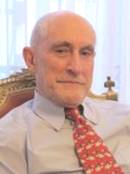
May Lithuania rot in hell for a thousand years! This is what one could recently read in a Letter to VilNews’ Editor. This vindictive sentence sums up, in a nutshell, the language of a number of the current Western (including Israeli) and Russian discourses on this Baltic country. The rationale behind this demonization is what the authors of these writings consider as the radical and supposedly built-in anti-Semitism of the Lithuanians.
To support their demonstration, they argue that the « Lithuanians » have recently been systematically trying to obliterate their massive participation in the Shoah (Holocaust) by putting forward the forged thesis of the so-called « double genocide ». Two of their main arguments in this respect are the Lithuanian support to the 2008 Prague Declaration on European Conscience and Communism, and on the one hand, the name and the exhibits of the Vilnius Genocide Museum on the other hand (displaying much more about the Soviet oppression than about the Nazi one).
These two points are indeed objectively questionable and, more generally, despite many significant progresses, there are evidently a number of things to criticize in the Lithuanian handling of the Jewish question. Nothing however justifies the current intensity of their gesticulations and the « ontological » hate against this country they manifest ! In these matters, Lithuania is certainly not worse than most of the post-soviet countries of the East-Central European Area. Amongst the nations of the area, Lithuania is probably the one which has accomplished the biggest steps toward recognition and information of its dark pages in history, and these critics appear to systematically ignore this fact. The recent reaction of the informed public about the recent neo-Nazi parade in Vilnius offers a good illustration of this evolution.
If these current harsh and oversized critics really wanted to help the Lithuanian society progress forward on the way of recognition and democracy, it seems evident that they would adopt a more acceptable and convincing language. They would also address the Lithuanian public and not the Western media which are basically very uniformed of these matters and furthermore deprived of any contacts with the Lithuanian population.
If their aim is really an improvement of the situation on the Eastern-Central European ground at large, it also appears that they should concentrate on what takes place currently in the field of human rights. In this respect, a country like Russia where racism is unfortunately omnipresent and where historical revisionism is often a state Policy should be a central preoccupation! On the contrary, they regularly side-up with Moscow in criticizing the small neighbouring countries!
No, their attitude is not rational and obviously originates from somewhere else and has other objectives which – at this point – are unfortunately not very clear.
- Bookmark :
- Digg
- del.icio.us
- Stumbleupon
- Redit it
- Posted by - (1) Comment

Night Knight
by KR Slade
I finished at school then home I came.
And fourteen days past Christmas next
my father went in sleep to his grave.
When I had forgotten so long before
the stories at bedtime that he had told.
I’d always to sleep and miss some part
but waked again to hear some more;
so all the story I’d often heard but never
remembered from start to end, the all.
Wasn’t it just of our to-make-believe ?
Didn’t we laugh because it wasn’t true ?
But now I know that jest was only just
to make it less scary for then and now.
The legend that would for me come true.
What little child dreams not of knights ?
Big they; strong; protect from dark nights.
The horse must of white, so too the armoured knight.
With touches of gold on spurs and swords,
handles, hilt, and harness: to herald.
Shield, with that more-ancient cross of ours,
held high on arm to cover heart to thwart,
while the hand holding reins aims stead.
Above all: sword drawn, held high, the ready.
Always red: all-behind Sir Knight and horse
on fields of battles: that is a crest of blood.
That mighty, charging, mounted knight be Vytis.
We, who know, are of his people, tribe, and nation.
He knows us, each and every one of us that be,
and may again demand any/all of us to his army;
and each and every one of us, we’d have no choice,
have to go, to answer the call, mustered we’d must.
But not to worry, you my cousins; just this, a story.
Legends have their ways with little boys and girls.
And scary times remember many bedroom nights.
Makes sleep so preferable to wakened fright.
An anniversary later of Dad’s death came Vytis.
For others he comes at times significant to them.
Riding calmly to my bedside that unexpected night;
Warm moist breath again from horse’s hairy nostrils
tickled my belly, made me giggle, awakened me gently.
We needed not introductions, the Sir Knight and I.
We had been known to each, the other, long-time now.
He spoke to me in a language that I did not know;
no matter language; I knew his message instinctively.
His message: he was going to be coming back for me.
Further anniversaries passed; nothing new much noticed.
Then, un-foretold was to be what was the penultimate:
Vytis and stead arrived on the hour’s time, with news
that anniversary next, that I was to be ready-waiting;
When I was going with them, and never coming back.
To a far-off land, I’d never known: but there, home.
No, I would not need to take any thing, all awaited me.
There was no thing more to do, to come more ready.
That night, I would be ready, as had I always been.
It would just be then, that was my-own time to go.
When the time was coming, I was so much excited.
Many nights I could not sleep, for not knowing when.
The days I busied in preparing, yet not-knowing what,
until consumed by unknown, but certain fate, I slept.
To be awakened once again by horsy, hairy breath,
Soft, nudging nose caressing, tickling me to wake.
But it was only noble horse, and me; no knight.
No knight; at least not yet, until I dressed myself
in that white shining armour, so heavily laden-on,
from on horse’s back to mine, together to horseback.
I was quite surprised to know how it all fit together.
Seemed to come quite natural, one piece, then the next.
I mounted, rode some, then we went from trot to gallop.
To more time in air than to touching ground we went.
Until I was feeling as comfortable as ever I had known,
and there afterwards as fearless as I have never known.
My left side shielding sword sheath near to my dagger.
Reins effortlessly I holding to my horse’s bridled head,
that so-gallant beast, my friend, who knew my mind.
My right arm drew and brought up that mighty sword.
Above my helmet, to sail and rudder through the wind.
When in time a voice in passing yelled to me, “Vytis !”
I turned to look, in autonomic acknowledgment.
When then, I remembered all, that of the legend old.
How Vytis is reborn/renewed, from time-to-time.
For an unknown time since, I live in a forest deep.
And there when I do sleep, my horse be by me;
I am-become the warrior, not ever unescorted.
He standing by my trident boughs of mighty oak;
still, always warming me: his body and breath.
I safe at home in my sacred three-forked tree fort.
He still always holding all my armour, at the ready.
With close nearby other faithful sons and daughters,
in our quiet armies ready, as we must always be.
And hover-over all of us does stand guard our God,
Perkunas, his thunder ready; never does He sleep;
old-looking, ancient man, white haired and bearded:
God of all thunder, lightening too; chief of all the gods.
So sleep you well too, now, all my young cousins,
you of our nation now republic’d, finally, once again.
You: safe, secure, with good tomorrows coming.
Remember: be ready, always, to take your turn as Vytis.
And now rest well, to know and remember: legends live.
All Rights Reserved: 2004
kenmunications@gmail.com
- Bookmark :
- Digg
- del.icio.us
- Stumbleupon
- Redit it
Chronicle of Lithuania – in a global perspective
- Posted by - (2) Comment
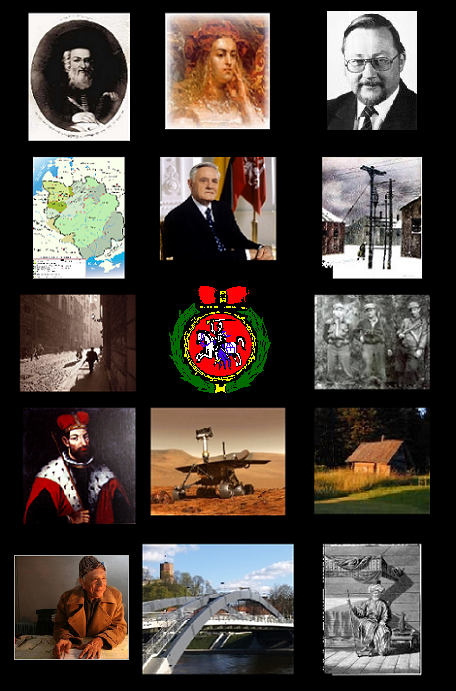
LITHUANIA - IN A GLOBAL PERSPECTIVE
A chronicle of historic and contemporary Lithuania and her relations to the world
See also: https://vilnews.com/?p=886
I have, over the years since I first came to Lithuania from my native Norway in 1990, often wondered why authorities or other institutions here haven’t published a chronicle describing the many ties and touching points this amazing country has to the rest of the world throughout historical and modern times.
Because Lithuania is a country that cannot be understood if you don’t know at least something about its exceptional past and its extraordinary ties with Italy, India, South Africa, Israel, Poland, Belarus, Ukraine, Crimea/Turkey, Sweden, Germany, Russia, Australia and America.
This was why I some years ago put together my own electronic ‘Chronicle of Lithuania in a global perspective’. that I often have used for presentations to guests and others with some interest in this little country that once was a ‘superpower’ of world class and for hundreds of years a thriving cradle for co-existence between people from many nations, cultures and religions. Or, as the British historian Norman Davies puts it: “Lithuania was a haven of tolerance”. Davies was not the only one who took notice of this. Erasmus of Rotterdam (1466 – 1536) is quoted as stating; “I congratulate this nation [Lithuania] which now, in sciences, jurisprudence, morals, and religion, and in all that separates us from barbarism, is so flourishing that it can rival the first and most glorious of nations.”
I know that foreign embassies and international companies, as well as many individuals, for many years have been using my ‘chronicle’ when they try to describe Lithuania to people and institutions in other countries, and I also urge you, dear readers, to pass on a link to this 'chronicle' to all your friends and acquaintances. That’s how we together can make Lithuania better known and understood for people around the globe...
Please keep in mind, however, that this is my personal collection of articles and impressions, not in chronological order, hence it might very well be that a historian would have chosen other articles and put together the information in a completely different manner. Nevertheless; have a good read. I believe afterwards you will agree with me that Lithuania is a truly amazing and far too little known spot on the world map!
Aage Myhre, Editor-in-Chief
aage.myhre@VilNews.com
TOPIC 1:
Lithuania’s peaceful fight for new freedom 1988-91
The little stroke that fell the great bear and opened for the new era of a united Europe
|
|
|
| Funeral of the victims of the 13 January 1991 Soviet attacks on Lithuania | Professor Vytautas Landsbergis, January 1991 |
"Lithuanians, do not resist, your government has deceived you. Go home to your families and children."
This was the repeated announcement from the Soviet military sound trucks rolling through the streets of Vilnius in January 1991. But luckily for Lithuania and for the new united Europe we today take more or less for granted, there was a music professor and a complete little nation supporting him that wanted it all differently. Hadn‘t it been for this peaceful fight for regained freedom against an occupation and a ruling the people of the Baltic States never wanted or agreed to, the map of Europe would most likely have looked very different today...
If there were those in the West who hadn’t heard about Lithuania before, they almost certainly had by the end of the day, January 13, 1991. That was the day Soviet troops cracked down in Vilnius and the resulting bloodshed made headlines around the world. The action was apparently a bid to stop Lithuania’s independence drive in its tracks. By the time the firing stopped and the smoke cleared, more than a dozen people lay dead, and hundreds more were injured. The crackdown, and particularly the killings at the TV tower, not only brought fame and sympathy to Lithuania from around the world, it was also a defining moment for Lithuanians themselves. The bloodshed meant they had crossed a point of no return. If there was ever any notion of reconciling with Moscow, it was now unthinkable. For those watching from abroad, Vytautas Landsbergis was the central player in the drama unfolding in Vilnius. The colourful, quick-tempered music professor became Lithuania’s president (or chairman of the Lithuanian Supreme Council) in 1990 and, from that time on, his name became almost synonymous with the Lithuanian independence movement. His blunt talk about breaking free of the Soviet Union and about Lithuania’s moral right to be able to do so startled observers in the West almost as much as it infuriated the Kremlin.
See also: https://vilnews.com/?p=3642
TOPIC 2:
South Africa, home to 70,000 Lithuanian Jews
Lithuanians dominate the Jewish community in South Africa to an extent seen in no other country, even their former home. "We have around 80,000 to 90,000 Jews in South Africa, and about 80 percent of them are of Baltic descent, most of them from Lithuania," said David Saks, an historian and researcher at the Jewish Board of Deputies in Johannesburg. "We probably have the most 'Lithuanian' Jewish community in the world," said Saks, whose own grandparents came from Lithuania. This ratio even exceeds that of Lithuania itself as most of the Baltic state's small Jewish community, now numbering a mere 5,000, is comprised mostly of immigrants who arrived from different parts of the Soviet Union after World War Two.The war devastated Lithuanian Jewry, once a leading centre of Jewish thought and culture. Historians estimate that 94 percent of the country's pre-war Jewish population of 220,000 perished in the Holocaust. The capital Vilnius, once known as the Jerusalem of the North, was home to a thriving community of 60,000 Jews, with more than 90 synagogues and the biggest Yiddish library in the world. Aside from one functioning synagogue, few traces of its rich Jewish past remain. "South Africa is more Litvak than Lithuania itself...we see our culture and society have been preserved there," said playwright and novelist Mark Zingeris, one of the few Litvaks remaining in Lithuania.
See also: https://vilnews.com/?p=1703
TOPIC 3:
Italy’s extraordinary, little known role in Lithuania
|
|
|
|
| Sigismund the Old | Bona Sforza | The Royal Palace – once again being rebuilt |
When Lithuania’s Grand Duke, Sigismund the Old in 1518 married the Italian Princess Bona Sforza, this became an outstanding manifestation of the already strong relationship between Italy and Lithuania. The royal couple created together an Italian community within the court and Italian culture became the preoccupation of the Vilnius city elite. Macheroni, skryliai, and even the confection marcipanus became staples among the cogniscenti and life at court became a series of cultural events, with rich noblemen competing for extravagance. During the rule of Sigismund the Old the palace was greatly expanded, to meet the new needs of the Grand Duke and Duchess. Another wing was added, as well as a third floor and the gardens were also extended. The palace reconstruction plan was probably prepared by Italian architect Bartolomeo Berrecci da Pontassieve.
The Royal Palace – that now again is being rebuilt – was remodelled by Bona Sforza and Sigismund the Old in Renaissance style. The plans were prepared by Italian architects, including Giovanni Cini da Siena, Bernardino de Gianotis Zanobi, and others. Among the many visitors to the Palace was Ippolito Aldobrandini, who later became Pope Clement VIII, also this emphasizing the extraordinary connections between Italy and Lithuania that lasted for hundreds of years – also giving background for the saying that ‘Vilnius is the world’s most Italian city outside Italy’. Throughout the Renaissance, when Italy was the leading trading centre and a melting pot for the world’s greatest civilizations, Vilnius also became a leading Renaissance centre of world class.
See also: https://vilnews.com/?p=2927 and https://vilnews.com/?p=1652
TOPIC 4:
The Lithuanian-Americans, a nation outside the nation
|
|
|
| Ex-President Valdas Adamkus is today’s most famous US-Lithuanian | Distribution of Lithuanian-Americans according to the 2000 census |
Many Lithuanians immigrated to the New World before the American Revolution. The first may have been a Lithuanian physician, Dr. Aleksandras Kursius, who is believed to have lived in New York as early as 1660. Most of the other Lithuanians who ventured to the Americas during this period were members of the noble class or practitioners of particular trades. But the first really significant wave of Lithuanian immigration to the United States began in the late 1860s, after the American Civil War. During the late nineteenth and early twentieth centuries, an estimated 300,000 Lithuanians journeyed to America. A flow that was later halted by the combined effects of World War I, the restriction of immigration into the United States and the achievement in 1918 of Lithuanian independence.
The second wave of immigration had a greater impact on U.S. census figures. Following World War II, a flood of displaced refugees fled west to escape the Russian reoccupation of Lithuania. Eventually 30,000 Dipukai (war refugees or displaced persons) settled in the United States, primarily in cities in the East and the Midwest. These immigrants included many trained and educated leaders and professionals who hoped to return someday to Lithuania. The heightening of tensions between the United States and the Soviet Union—known as the Cold War—dampened these expectations, and many Lithuanians sought to create a semi permanent life in the United States. By 1990 the U.S. Bureau of the Census listed 811,865 Americans claiming "Lithuanian" as a first or second ancestry.
The main areas of Lithuanian settlement in the United States included industrial towns of the Northeast, the larger cities of the Northeast and the Midwest, and the coal fields of Pennsylvania and southern Illinois. According to the 1930 census report, only about 13 percent of Lithuanians lived in rural areas, and even fewer—about two percent—were involved in agriculture. Nearly 20 percent of all Lithuanian immigrants settled in Chicago alone. Throughout the twentieth century, Lithuanian Americans began to climb up the economic ladder and gain an important place in their local communities. This mobility allowed them to enter the American mainstream.
Two important developments in Lithuania led to the growth of a strong Lithuanian American ethnic identity: the late nineteenth-century rise of Lithuanian national consciousness and the achievement of Lithuanian independence in 1918. Lithuanian Americans were staunch supporters of their newly independent homeland during the 1920s and 1930s, and some even returned to assist in the restructuring of the country's economy and government.
The post World War II wave of Lithuanian immigrants—the Dipukai—also experienced a surge of Lithuanian consciousness. These later immigrants saw themselves as an exiled community and clung to their memory of two decades of freedom in Lithuania. They developed an extensive network of schools, churches, and cultural institutions for the maintenance of Lithuanian identity in the United States.
See also:
https://vilnews.com/?p=2071
https://vilnews.com/?p=3798
https://vilnews.com/?p=766
https://vilnews.com/?p=2027
https://vilnews.com/?p=762
https://vilnews.com/?p=6704
TOPIC 5:
Lithuania and India - same language root and more…
|
|
Pictures: Aage Myhre |
It’s early morning in Delhi, India. I have been invited to the small, dark office of Professor Lokesh Chandra, one of India’s leading experts on Sanskrit and Buddhism. “The same year I was born, 1927, my father went to London to get a degree in Lithuanian language. He spoke the language fluently, but he never visited Lithuania”, tells the elderly professor, still with his Kashmir coat and cap on, despite the outside temperature of close to 300 Celsius. And I soon learn that the professor’s knowledge about the connections between Old Sanskrit and the Lithuanian language and ancient cultural ties between India and Lithuania is nothing but amazing.
It is a common belief that there is a close similarity between the Lithuanian and Sanskrit languages; Lithuanian being the European language grammatically closest to Sanskrit. It is not difficult to imagine the surprise of the scholarly world when they learned that even in their time somewhere on the Nemunas River lived a people who spoke a language as archaic in many of its forms as Sanskrit itself. Although it was not exactly true that a professor of Sanskrit could talk to Lithuanian farmers in their language, coincidences between these two languages were truly amazing, for example:
Sanskrit sunus - Lithuanian sunus; son Sanskrit viras - Lithuanian vyras; man
Sanskrit avis - Lithuanian avis; sheep Sanskrit dhumas - Lithuanian dumas; smoke
Sanskrit padas - Lithuanian padas; sole
We can assert that these Lihuanian words have not changed their forms for the last five thousand years!
Read also: https://vilnews.com/?p=4425 and https://vilnews.com/?p=4434
TOPIC 6:
Lithuania 1000 years in 2009!

In 2009, Lithuania celebrated its Millennium – as the name Lithuania was mentioned for the first time in 1009 in the Annales Quedlinburgenses books. Lithuania's name Lietuva is considered to have developed from the name of the 11-km long rivulet Lietauka. The area between the middle Nemunas and the Neris where Kernavė, Nemenčinė and Maišiagala now are is believed to have been the land called Lietuva. Duke Mindaugas was the ruler there, and the River Lietauka ran through that area and fell into the Neris upstream of the Šventoji. The Land of Lietuva (Lithuania) is supposed to have been named after the river, and the name was later extended to the State of Lithuania. Other sources indicate that the Land of Lietuva, was on the right bank of the Šventoji in the area between Anykščiai and Viešintai and prove their conclusion by the existence of the administrative unit, Vaitystė of Leitava, there.
"In 1009 St Bruno, who is called Boniface (Bonifatius), Archbishop and monk, in the second year of his conversion, on the border between Russia and Lithuania (Lituae), having been hit on the head by the pagans, and his 18 men went to heaven on the 23rd of February. "There are several sources that mention the event - the killing of the missionary but they refer to Prussia rather than Lithuania, which proves that both Germans and Poles did not know about the existence of Lithuanians then. They thought that Prussians were the only Balts (or the majority of Balts). Quedlinburg Annals mentioned Lithuania because they were keen on precision and the information was received from St Bruno's entourage. The story about St Bruno describes the political organisation of Lithuanians, which was peculiar and not characteristic of other Baltic tribes before the 13th century.
TOPIC 7:
Modern Lithuania in a new Europe
|
|
|
Lithuania has shown an impressive economic performance since its liberation from the USSR. “The Ballistic Baltic” and “The Baltic Tiger” are only two of the labels attached by foreign market observers to signify the speed and expected sustainability of this economic growth.
However, main restructuring based growth resources are coming to the end, which implies the need for search of new growth resources or decline of the growth cycle of the economy has as its vital economic interest to incentives and promote higher-quality high-tech industries, through R&D support, high-tech industry incubators, and appropriate educational focus.
The general strengths of Lithuanian national innovation system lies in the well developed and continuing its academic tradition higher education sector with strong science and technology research tradition and engineering orientation.
This results in a relatively high share of the population with tertiary education, high numbers of S&T graduates among them, and cultural orientation of the younger generation towards higher education. However, restricted resources for R&D and the higher education sector combined with the growing numbers of students at all higher education levels doubts the quality of education, especially in areas where technological based education is significantly important. Also low or non existing investments of businesses in vocational training lead to obsolete qualifications not suitable for high tech high skill work. The weak links between business and higher education and R&D communities result not only in obsolescing qualifications of the highly educated labour force, but also in low value added innovations, developed without input from the R&D sector.
TOPIC 8:
Karaims and Tatars - Turkish nationalities in Lithuania
|
|
|
| Typical Karaim house in Trakai, 30 km from Vilnius city | A senior Tatar Muslim cleric (akhund) |
Since the 14th Century two Turkish nationalities – Tatars and Karaims – have been living in Lithuania. From linguistic and ethno genetic points of view they belong to the oldest Turkish tribes - Kipchaks. This ethnonym (Kipchak) for the first time was mentioned in historical chronicles of Central Asia in the 1st millennium BC. Anthropologically ancient Kipchaks were very close to Siberia inhabitants Dinlins, who lived on both sides of the Sajan Mountains in Tuva and the northern part of Gob. In 5th century BC Kipchaks lived in the West of Mongolia, in 3rd century BC they were conquered by Huns. Since the 6 - 8 centuries, when the first nomadic Turkish empires were founded, the Kipchak’s fate is closely connected with the history and migration of the Middle Asia tribes. In Turkish literature they are known as Kipchaks. The history of Karaims is connected with Lithuania since 1397-1398. According to the tradition, The Great Duke of Lithuania Vytautas, after one of the marches to the Golden Horde steppes, had to bring from the Crimea several hundred Karaims and settle them in the Great Duchy of Lithuania. Transference of several hundred Karaim families and several thousand Tatars was not done once. It was in connection with the state policy of The Great Duchy to inhabit the empty areas, build towns and castles and to develop trade and economic life. Initially, Karaims were settled in Trakai between the two castles of The Great Duke, present Karaim Street. Later they were found living in Biržai, Naujamiestis, Pasvalys and Panevėžys. However, Trakai has always been the community's administrative and spiritual centre for Karaims in Lithuania, nowadays more and more also for Karaims throughout the world.
See also: https://vilnews.com/?p=2942
TOPIC 9:
Lithuania 500 years ago was Europe’s largest country
|
|
|
| Vytautas the Great (1350-1430) | The Grand Duchy of Lithuania, 13-16 centuries (marked green) |
“Lithuania was a superpower much longer than USA has been“. This is how I often tease my American friends arriving in Vilnius. But the teasing is in fact not so far away from reality, as the Grand Duchy of Lithuania (GDL) for 300 years was one of the leading and largest nations of the World, stretching from the Baltic Sea to the Black Sea.
It all started with King Mindaugas (1203-1263), Lithuania‘s first and only king, who in 1236 defeated the Livonian Brothers of the Sword and united the different Lithuanian tribes under his reign. But the real expansion began when Grand Duke Gediminas (1275 – 1341) came to power in 1316, and started a new dynasty of leaders. Gediminas employed several forms of statesmanship to expand and strengthen the GDL. He invited members of religious orders to come to the Grand Duchy, announced his loyalty to the Pope and to his neighbouring Catholic countries and made political allies with dukes in Russia as well as with the Poles through marriage to women in his family. Gediminas’ political skills are revealed in a series of letters written to Rome and nearby cities. He makes mention of the Franciscan and Dominican monks who had come to the GDL by invitation and were given the rights to preach, baptise and perform other religious services. He also included an open invitation to artisans and farmers to come and live in the GDL, promising support and reduced taxes to those who would come. Under Vytautas the Great (1350-1430), Lithuania‘s military and economy grew even stronger, and he was the one expanding the Grand Duchy‘s frontiers south to the Black Sea. The Grand Duchy was at its largest by the middle of the 15th Century. It existed in the very centre of Europe and comprised the entire territories of contemporary Lithuania, Belarus, Ukraine, a part of Poland and stretched from the Baltic Sea to the Black Sea. Both Belarus and Ukraine point back to the days when they were part of the thriving GDL as proof of their cultural and political distinction from Russia. Successfully ruled by a dynastic line of dukes, the Grand Duchy of Lithuania (GDL) developed a highly advanced system of state administration and stove off invading Crusaders longer than any other Central European power. Its statesmen conducted effective foreign policy and military campaigns and created a multi-ethnic state. Though officially ended in 1795, the history of the GDL continues to influence modern-day nationalist thinking in the region. Not only Lithuania but also Belarus and Ukraine remember the days when they were part of the thriving GDL as proof of their cultural and political strength clearly distinguishing them from Russia.
By the way, Grand Duke Gediminas (1275 – 1341) is my personal favourite among all the Lithuanian nobles, and in my opinion, he was one of the greatest rulers of medieval Europe. He was a man of extraordinary knowledge and wisdom, understanding the importance and advantage of having a multicultural society as the foundation for his new city, more cleverly than most world rulers during the centuries after him. In October 1323, for example, representatives of the archbishop of Riga, the bishop of Dorpat, the king of Denmark, the Dominican and Franciscan orders, and the Grand Master of the Teutonic Order assembled in Vilnius when Gediminas confirmed his promises and undertook to be baptized as soon as the papal legates arrived. A compact was then signed in Vilnius, in the name of the whole Christian World, between Gediminas and the delegates, confirming the promised privileges. Fifteen months later, on the 25th of January 1325, Gediminas issued circular letters to the principal Hansa towns in Europe offering a free access into his domains to men of every order and profession from nobles and knights to tillers of the soil. The immigrants were to choose their own settlements and be governed by their own laws. After Gediminas, Vilnius emerged over hundreds of years, expanding, changing, and embodying the creative imagination and experience of many generations of architects and builders from Lithuania and abroad. Under the care of generous and perceptive benefactors, it became a city rich in architectural treasures and urban harmony.
See also: https://vilnews.com/?p=326
TOPIC 10:
Lithuania’s new international role – a bridge at the crossroads of east-west-south-north
|
|
|
Today Lithuania is in a unique position to continue and expand its role as a significant transportation hub and meeting point for many neighbouring regions. Lithuania serves as a natural bridge for East - West (Europe-Asia) traffic with transport connections to the Trans-Siberian rail route and direct links with Russia and other countries of the former Soviet Union, as well as rapidly growing Baltic countries and even East Asia, including China. Nearly half or 45% of Russia’s total foreign trade passes through the Baltic Sea ports. A major advantage of Lithuania lies in its strategic location at the crossroads between Eastern and Western Europe as well as the Baltic Sea region. Lithuania has for centuries been on an important trade route, linking the Baltic Sea Region to the Black Sea. Klaipeda, the country’s sea coast city, has moved from having been an important port city in the Hanseatic League of trading cities around the Baltic and North Sea since the 13th century, to becoming a modern logistic hub for trade and transport between Western and Eastern Europe. Its unfrozen port is the best transportation centre between the east and west. Vilnius, the capital of Lithuania, is together with the country‘s second largest city, Kaunas, developing into a huge metropolis, showing all the potential of becoming a significant commercial, financial and transportation centre for the Baltic Sea region and Northern Europe. Traditions and experience gained during many centuries and historically strong presence of people from many nations and backgrounds are important for conducting economic relations nowadays. In addition, Lithuania is located in one of the most dynamic and competitive areas of the world representing 10 metropolitan areas with over 90 million inhabitants and being the home to well-established companies and product brands and the leading IT and telecom producing area of Europe with the highest cellular telephone penetration in the world.
TOPIC 11:
For hundreds of years Lithuania was the home-country to amazingly thriving Jewish communities
Napoleon Bonaparte was the one who started calling Vilnius ‘Jerusalem of the North’, when he arrived here in June 1812. It was the first and only "Jewish city" Napoleon would ever see. It is said that he became very surprised on what met him in Vilnius, a city so far away from the European mainstreams and still with a lively Mediterranean mood and life. And true enough, the history of the Litvaks, as the Lithuanian Jews are called, is unusual and surprising. It was a history of mostly peaceful coexistence with other peoples and cultures that lasted for more than six centuries. It was a history that spawned an incredible number of eminent Jews. The "Golden Age of Jewry" in Lithuania started with Grand Duke Gediminas (1275-1341), the empire builder who took a liking to foreigners and Jews whose skills and education were badly needed in medieval Lithuania. In the early 1300's he attracted them to his realm with numerous perks, including guarantees of religious freedom and tax exemptions. The Jews of Europe responded in droves, and Vilnius became the heralded centre of Jewish culture and learning. There would be synagogues, schools, theatres, publishing houses and the Yiddish Institute of Higher Learning. At a time when others in Europe were effectively illiterate, all the Jews in Vilnius could read and write. This was so unusual that it provoked the invention of a brand-new word, "Vilner," meaning "an educated man with knowledge." For almost 700 years, the Litvaks became an inseparable part of Lithuanian society, having enriched the country’s economy, culture, science, and education. During the Second World War, about 200,000 (95%), Lithuanian Jews were murdered. This was the greatest loss in all of Eastern and Central Europe. The Nazi Holocaust led to an almost complete extermination of Lithuania’s Jews, and also the destruction of their history and cultural monuments - a most tragic page of Lithuanian history.
See also: https://vilnews.com/?page_id=152
TOPIC 12:
Poland and Lithuania – an intertwined relationship
 |
|
|
|
Poland and Lithuania have an exceptionally intertwined history since the Middle Ages and, unfortunately - so much has divided and remained problematic between these two close neighbours. But maybe the time now has come to focus on what unites? Maybe it’s time to study the example of the famous writer Czeslaw Milosz?
Nobel Price Winner Czesław Miłosz was born June 30, 1911 in Szetejnie, Lithuania. He spent his youth in Vilnius. During his law studies at Stefan Batory University in Vilnius he created a poets' group called Żagary. He published his first volume of poetry, A Poem in Frozen Time, in 1933. During the German occupation, Miłosz participated in Warsaw's underground cultural life, even publishing a volume of poetry called Invincible Song.
In 1960 Miłosz moved to the United States, where he became a professor at Berkeley University's department of Slavic literature. Throughout this period, Miłosz mainly published his works in Paris and the United States. Initially he specialized in writing essays but he gradually became a well-known poet. His fame was confirmed by the Neustadt International Prize for Literature and being crowned with the Nobel Prize. In Poland his works were largely absent from the official press, only published occasionally in collective anthologies. Only following his Nobel Prize were Miłosz's poems officially published and only then was he allowed to return to Poland. Miłosz died in 2004, at his home in Kraków, aged 93. His first wife, Janina, had died in 1986; and his second wife, Carol, a U.S.-born historian, in 2002.
TOPIC 13:
600,000 persons from the Baltic States were deported to Siberia during the period 1940-53
|
|
|
| Lithuanians in Molotkov, Siberia (unknown year) | Former President of Lithuania, Aleksandras Stulginskis, was one of the many deportees |
The saddest period in the history of Lithuania began in August 1939, when Hitler and Stalin concluded their agreement that divided up Central Europe. After the outbreak of the Second World War, Lithuania was occupied three times: first by the USSR in 1940, then by Nazi Germany in 1941, and finally by the USSR again in 1944. During the Nazi and Soviet occupations, including 200,000 Holocaust victims, the losses of the population of Lithuania amounted to 33 percent of the total number of the country's population in 1940. Lithuania lost 1 million people to deportations, executions, incarceration, murder of political opposition and forced emigration. Altogether, some 600,000 prisoners were taken from the Soviet occupied Baltic States - Lithuania, Latvia, and Estonia. There were some 10 million inhabitants in all three Baltic States on the eve of the Soviet occupation. Proportionately, the number of Baltic prisoners would be equal to a loss of 20 million in the United States or 5 million in Great Britain. During 1940-1953, some 132,000 Lithuanians were deported to remote areas of the USSR: Siberia, the Arctic Circle zone and Central Asia. They were not allowed to leave remote villages. More than 70 percent of the deportees were women and children. Some 50,000 of the deportees were not able to return to Lithuania. During the same period, another 200,000 people were thrown into prisons. Some 150,000 of them were sent to the Gulags, the USSR‘s concentration camps, situated mostly in Siberia.
See also:
https://vilnews.com/?p=335
https://vilnews.com/?p=2168
https://vilnews.com/?p=6539
TOPIC 14:
The Lithuanian partisan war 1944-53 was the longest and bloodiest guerrilla war of modern Europe
Despite the heroics of the Lithuanian partisans, or Forest Brothers as they became known, they were doomed to failure because it was a fight that was ignored by the West. Their war became known as the ‘unknown’ or ‘hidden’ war. Altogether 22,000 Lithuanian partisans and their supporters lost their lives in the struggle against the Soviet and NKVD (later to become the KGB) forces. The war continued until 1953, though the last resistance fighter refused to surrender and shot himself in 1965 and another partisan finally came out of hiding in 1986. “The Lithuanians had to choose from three options: to emigrate, stay in Lithuania and suffer the oppression and humiliation, or go into a forest to defend their Fatherland,” said Albinas Kentra, chairman of the Lithuanian Forest Brothers Union. The basic goal of the guerrilla warfare was aimed at the re-establishment of Lithuanian Sovereignty. Thousands of men gathered in the forests in the hope that they would not have to hold out for long – only until the Peace Conference decided to implement the principle of national self-determination.
See also:
https://vilnews.com/?p=5391
https://vilnews.com/?page_id=131&paged=2
TOPIC 15:
Lithuania – a land of unspoilt nature, an example for countries around the world
|
|
|
|
Nature is everywhere in Lithuania. Even the approaches to Vilnius are surrounded by forests, and every spring, a woodland grouse, the capercaillie one of the rarest birds, carries out its mating rituals just 20 kilometres from the town centre in an old pine forest which has been preserved for it.
It would be difficult today to identify the beginning of the environmental tradition in Lithuania. Perhaps we could look for it in the statutes of the 16th century, the key state legal documents. Perhaps it started even earlier, in the sacred oak groves that could be damaged only by the winds and storms, but never by man. The first nature reserve, at Žuvintas, was founded 70 years ago. There, everything is left to nature. No man’s foot can step in it. Birds and animals there may feel that their nests and offspring are safe. Today the network of protected areas covers 12 per cent of the country, including five national parks, four sanctuaries, 30 regional parks and multiple reserves.
Every ancient tree, or rock in an interesting shape and form of relief, is protected.
TOPIC 16:
Lithuania on Mars
Lithuania was once known as the Soviet Silicon Valley, and also today the country has a very strong research and development sector. Lithuanian world-class specialists cooperate with NASA, NATO, Volvo, Saab, Philips, and many others in the fields of biotechnology, biochemistry, laser optics, chemistry, physics, etc.
According to Paris‘ “Le Monde”, Lithuania is the biggest exporter of femtosecond lasers in the world. Among the clients is NASA, i.e. using Lithuanian laser technology for analyses of minerals on Mars! A country of 3.5 million people, Lithuania, has about 15 laser producers, employing about 300 laser specialists, half of which are engineers and doctors of sciences. Lithuania’s laser sector grows about 15-20 % annualy, which is twice faster than the whole economy of the country. Lithuanian laser production is demanded by the best scientific laboratories in Europe and the US.
Lithuania has six science and technology parks which develop favourable infrastructure for the establishment of new innovative businesses in Lithuania and encourage the growth of existing ones engaged in the development of innovative technologies. Lithuania’s science and technology parks seek to provide a comfortable environment for commercializing R&D activities and integrating business, science, and research by supporting knowledge transfers leading to the exploitation of research results and to the development of marketable products and services. According to the 7 Economist Intelligence Unit (EIU) in 2006, Lithuania demonstrated an advanced e-business environment. Lithuania was acknowledged as one of the emerging markets where mobile phone penetration is several times that of fixed lines. This, plus a rapid increase in the number of WiFi hotspots in its capital and other cities, has helped improve overall connectivity for its consumers and businesses. In Lithuania, e-banking, e-government services and mobile internet are being used in everyday business and life and are becoming increasingly popular.
“Lithuanian scientists are likely to become leaders in certain spheres of world science.” (Achilleas Mitsos, Director General of the European Commission’s Directorate General for Research).
- Bookmark :
- Digg
- del.icio.us
- Stumbleupon
- Redit it
- Posted by - (0) Comment

Welcome to Klaipėda!
Klaipėda is Lithuania’s third biggest city, situated at the mouth of the Curonian Lagoon to the Baltic Sea. It is Lithuania's only seaport, with major ferry connections to Sweden, Denmark and Germany. Throughout its history, the town has belonged as Memel to Prussia and Germany, and since 1923 as Klaipėda to Lithuania. Some of its older buildings have picturesque frameworkarchitecture similar to that found in Germany, England, and Denmark. The population shrank from 207,100 in 1992 to 187,442 inhabitants in 2005. Popular seaside resorts found close to Klaipėda are Nida to the south on the Curonian Spit, and Palanga to the north. The port of Klaipėda handles some 20 million tons of cargo each year.
From 1252–1923 and from 1939–1945 the town and city was named Memel; between 1923 and 1939, and since 1945, it has had the Lithuanian name of Klaipėda. Memel is found in most sources from the 13th century, while Klaipėda is commonly used in Lithuanian sources from the 15th century. The former notion that Memel is a place-name of German etymology is argued by Lithuanians to be contradicted by their evidence that the lower reaches of the Neman River were named either Memele or Memela by local inhabitants. The name "Klaipėda" is seemingly a Samogitian appellation which may refer to the boggy terrain of the town.
www.klaipeda.lt
www.klaipedainfo.lt
www.investinklaipeda.com
www.fez.lt
„At the beginning there was a sea and a coast. Then, contours of a castle showed up in the swampy ground, in the lower reaches of the river. And a windborne city – as open and unpredictable as the horizon – sprang up.
- Opening phrase from the booklet „Signs of culture in Klaipėda“
- Bookmark :
- Digg
- del.icio.us
- Stumbleupon
- Redit it
Zecharia Plavin: “One has to play from the heart”
- Posted by - (1) Comment
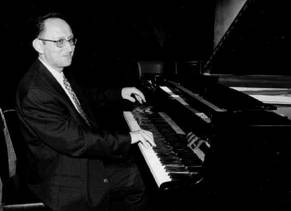
Zecharia Plavin: “One has to play from the heart and in search for the eternal truth, otherwise the music becomes trite”
Beginning his early piano education and performing career under Mrs. Devora Yellin and Prof. Marietta Azizbekova in Lithuania, where he was born in 1956, Zecharia Plavin emigrated to Israel, in 1977. There he continued his musical studies at the Rubin Academy in Tel Aviv under Prof. Victor Derevianko concluding in 1998 with his doctoral research on Ernest Bloch under Prof. Jehoash Hirshberg. A prizewinner of competitions in Lithuania and Israel, amongst them the Shapira Prize of the America-Israel Cultural Foundation in 1980 and the Bachauer Memorial Prize in Belgium, Dr. Plavin has concertized widely throughout Israel, Europe and the United States. Since his first appearance with the Israel Philharmonic Orchestra in 1980 he has performed with most major Israeli orchestras.
His professional credentials are of truly international scope. In addition to his teaching at Bar Ilan University and, for the past ten years as faculty member, at the Rubin Academy of Music and Dance in Jerusalem, Dr. Plavin has given recitals, workshops and master classes in Lithuania; the Hochschule für Musik in Würzburg, Germany; the South Bohemian Music Festival and the Prague Master Classes in the Czech Republic; as well as at the San Diego State University and the Hartt School of Music and in spring of 2001 the University of Illinois.
As a faculty member of the HED Centre of Yehud, his duties included the organization of international seminars of contemporary chamber music. The Center (now located in Tel Aviv) was designed to provide a platform for composers in Israel and, in this capacity Prof. Zecharia Plavin has worked with many distinguished composers including Sir Harrison Birthwistle and Einojuhanni Rautavaara.
His broad knowledge of art, literature and history as well as his profound familiarity with the life and circumstances of the composers of the selected repertoire allows him to bring special qualities to his music making as well as his teaching.
A thoughtful and searching musicality characterizes concerts by this superb musician. In search for the eternal truth in the music, pianist Zecharia Plavin gives another dimension to his performances:
"This is, quite simply, magnetic playing. Combining rhythmic strength with improvisatory fire, structural intuition with tonal finesse, Plavin projects both the intellect and the passion of the music with a conviction that's utterly compelling."
- Prof. Peter J. Rabinowitz, Contributing Editor at Fanfare
“His immersion in the music is so intense that its spiritual content is exposed and turned convincingly into sonorific substance.”
- Benjamin Bar-Am Jerusalem Post
“When Plavin reached the huge climax, after which Liszt inserts, abruptly, a moment of complete silence, I found myself holding my breath”
“Ein überragender Pianist, ein grossartiger Meister seines Fachs, der sich nicht nur mit Schumann ausenandergesetzt, sondern ihn auch verinnerlicht hat.”
- Hannoversche Allgemeine
“His playing is characterized by great taste, intelligence and fantasy. His very accomplished approach to diversified styles is made possible by a very strong technique always at the service of his art, never an end by itself.”
- Prof. Luiz de Moura Castro, The Hartt School
“…the unique quality of Mr. Plavin’s art is his quite uncanny ability to suggest to the listener the idea or experience behind the inspiration of the composer.”
- Concert pianist Michael Wladkowski, Ecole Normale de Musique de Paris
- Bookmark :
- Digg
- del.icio.us
- Stumbleupon
- Redit it
Back to the USSR!
- Posted by - (6) Comment
|
BACK TO THE USSR! Text: Vin Karnila
ZAZ-965A Zaporozhets, produced 1962-1969
When people talk about how life was and how society was during the Soviet times, it is not a happy conversation filled with laughter. Yes, there is the laughter and warm conversations about family events during this time. There is also much laughter when talking about some of the absurdities of the Soviet system of government but in general, there is very little to generate smiles and good humor when you talk about how the Soviets imposed their will on the people. With one exception – their automobiles...
|
SO, HOWS YOUR ZHIGULI?
Text: Vin Karnila
This could have been a common question between friends, family and colleagues during the time of Soviet Russia’s occupation of Lithuania and the Baltics. When people talk about how life was and how society was during this time, it is not a happy conversation filled with laughter. Yes, there is the laughter and warm conversations about family events during this time. There is also much laughter when talking about some of the absurdities of the Soviet system of government but in general, there is very little to generate smiles and good humor when you talk about how the Soviets imposed their will on the people. With one exception – their automobiles.
As most of you know, buying an automobile during Soviet times was not a matter of months of visiting one dealership and another, looking at automotive magazines getting advice on what model to buy, asking friends and family what they think is the best model for you. You went to a government office and submitted a written request to buy a car. After a year or so you found out if your request was approved. If it was approved you were TOLD what car the government was ALLOWING you to buy (in some cases you were very lucky and were given two options) and then you submitted your order and waited another two or three years (possibly longer) to actually take delivery.
In spite of all this, when ever the conversation turns to cars, when ever you ask about the car a person had during these times or when ever you mention a car of the Soviet era the reaction is always the same. The response is always smiles, laughter and entertaining stories about their car and their automotive adventures. Because of this I thought it would be entertaining and interesting to look at some of these vehicles of Soviet times just to give you a bit of an idea as to what causes all this good natured reminiscing.
ZAPOROZHETS / ZAZ
The Zaporožietis or Zaporožkė, as the Lithuanians said it (Zaporozhets in Russian) was a series of subcompact cars designed and built from 1958 at the ZAZ factory in Soviet Ukraine ("Zaporizky Avtomobilny Zavod", or Zaporizhian Automobile Factory). Different types of Zaporozhets were produced until 1994.
In Russian, the name Zaporozhets means a Cossack of the Zaporizhian Sich. It can also mean а man from the Zaporizia Oblast.
Zaporozhets are still warmly remembered in the Baltics and many of the other ex Soviet Russian occupied countries. In fact I must say that if you just mention Zaporožietis, immediately you see big smiles and most often the smiles turn to laughter. The Soviet Zaporozhets was destined to become a "people's car", as it was the cheapest of Soviet cars and so it was affordable to the common workers. In fact the term “peoples car” is not quite accurate in today’s opinion. Most people today consider it the “worker’s car” in that this was the car that lower paid “workers” were allowed to buy. If your status and income was higher than the “common worker” you were allowed to buy a car a bit more desirable. In spite of its small stature it proved to be rather sturdy and well suited for the poor Soviet roads. All Zaporozhets were rear engine and rear wheel drive with an air cooled engine. The looks of this car resulted in several nicknames. One was "Zapor". This was just short for "Zaporozhets" but the problem was that the word “zapor” in Russian also means "constipation". Some called it the “Kuprius” (hunchback) due to the ZAZ-965’s rear shape. ZAZ factory workers supposedly never used these derogatory nicknames, using "Malysh" (in Russian this roughly translates to child) instead. Another translates to "big-eared" since the car had air intake scoops on its sides to cool down the engine in the rear of the vehicle.
ZAZ-965 Zaporozhets model was made between 1960 and 1963. Despite the fact that the design is almost identical to the Fiat 600 and Puch 500, ZAZ representatives say that the car was exclusively Soviet designed and created by Soviet ZAZ engineers jointly with colleagues from Moscow's NAMI and Moskvitch car plant. The first prototypes were actually designated as Moskvitch-444.
It was powered by a rear-mounted, air cooled OHV 887 cc V4 engine of partially aluminum design. Urban legend had it that the Zaporozhets engine was a starter motor in Soviet tanks. This is completely false. Any one that has knowledge of the Soviet tanks of that era will tell you this.
ZAZ-965A Zaporozhets
The “A” model was manufactured between 1962 and 1969. The most notable visible difference was that the ZAZ-965A had the air-intake "ears" removed. It also had a new engine which created more room in the engine compartment. Since Soviet car owners were expected to do much of the servicing themselves, this layout was more practical especially if you needed to work on the car in harsh winter conditions.
ZAZ-965A Zaporozhets
While there are not a lot of ZAZ-965s still driving on the roads of the Baltics, it is surprising how many you still see. As you see one driving down the road it’s interesting to see the reactions of the other drivers. Every one looks, they point, they smile and if there are others in the car you can see that they immediately start talking to each other. When you see one parked on the street you will almost always see a group of people around it, all with big smiles on their faces. They are talking and laughing about the ZAZ that they had or some one they knew had and reminiscing about all the adventures and long trips they took in it. Let’s face it, the 965 is cute as a button and it’s just not possible to not love the little thing.
ZAZ-966 Zaporozhets model was made from 1967 to 1974. It had a restyled body and no longer resembled the Fiat 600 BUT NOW very closely resembling the German NSU Prinz 4 which had been on the roads since 1961. Once again the Soviets said, NO NO NO it’s our design (why do they always do that). In addition to the “new style” body, the engines were slightly updated but the infamous "ears" were back.
ZAZ-968 Zaporozhets was produced from 1972 to 1980. While the outside was about the same as the 966 model. it featured the newer MeMZ-968 engine, which increased the displacement to 1.2L and the power output.
Vladimir Putin with his 1972 ZAZ-968 Zaporozhets
ZAZ-968M Zaporozhets once again had the ears removed and was made from 1979 to 1994. Special versions of this model Zaporozhets were equipped with additional sets of controls that allowed operating the car for driver’s without the use of one leg or with hand controls if they were without the use of both legs. These were given for free to the disabled people that the Soviets felt warranted the use of an automobile.
ZAZ-968M
You still see quite a few ZAZ-968s on the road here. They have proven themselves to be very durable cars over the years and are easy for the owners to repair and maintain themselves and with the higher quality of replacement parts available today they are also quite reliable. While one that has been preserved or restored and is in excellent condition may get a few closer looks they just don’t get the attention the original ZAZ-965s do.
ZHIGULI
Due to exporting and a number of manufacturing plants around the world producing these cars, this is the most internationally recognized car of the Soviet Union. What most of the world knows as the LADA was named the ZHIGULI in the Soviet Union. Actually the name of the first model was VAZ-2101 manufactured by VAZ (Volzhsky Avtomobilny Zavod – Volga Automobile Plant). This time there was no guessing as to the true origin of the design. The VAZ-2101 came about through collaboration with the Soviet Union, Italy and Fiat. The manufacturing plant’s construction was begun in 1966 on the banks of the Volga River in the Samara Oblast of Russia and the first cars left the production line in 1970. The first model produced was the VAZ-2101 sedan. In 1972 the first station wagon was produced the Vaz-2102. A new town, Tolyatti, named after the Italian Communist Party leader Palmiro Togliatti, was built around the factory to accommodate all the workers.

VAZ-2101 Sedan
The origin of the VAZ-2101 comes from the Fiat 124 sedan so all were front engine, rear wheel drive with a straight rear axle. Many modifications were required though so that the car could survive being driven on the terrible roads in the Soviet Union and in extremely harsh winter weather. Some of these modifications were the suspension being strengthened and raised to clear rough Soviet roads and the body shell was made from thicker, heavier steel. The first models were equipped with a starting handle in case the battery went flat in Siberian winter conditions, though this was later dropped. Another feature specifically intended to help out in cold conditions was a manual auxiliary fuel pump. As with most automobile models, there were revisions over the years which resulted in the model numbers being changed to 2103,2105, 2106 and 2107. These revisions were mainly changes to the engine size and some cosmetic changes however they all kept the “boxy” shape and style of the Fiat 124. In the late 80s the ZHIGULI name went away, the company was restructured and became known as LADA. At this point the “boxy” Fiat 124 style went away and the company started producing more modern styled vehicles.

VAZ-2102 Wagon
The VAZ-2101 was also destined to become a “people’s car”. While more expensive than the ZAZ models it was still priced so that the “middle class” (if there ever was such a thing in the Soviet Union) could afford one.
Henry Ford said of his Model – T Ford vehicle:
"I will build a car for the great multitude. It will be large enough for the family, but small enough for the individual to run and care for. It will be constructed of the best materials, by the best men to be hired, after the simplest designs that modern engineering can devise. But it will be so low in price that no man making a good salary will be unable to own one—and enjoy with his family the blessing of hours of pleasure in God's great open spaces."
This was the intent of the Soviets with the ZHIGULI. It was said that based on the average wage of a worker, it would take about eight years for a person to save up the money to buy a one. The ZHIGULI quickly became a hit with the people and became the car of the Soviet Union. While the ZAZ was surprisingly roomy for a car its size the ZHIGULI was roomier and more comfortable. Keep in mind though that the ZHIGULI was a very basic vehicle and far from anything even remotely close to being luxurious. It also proved to be quite sturdy and reliable and owners could easily perform maintenance and do repairs. Not only was the ZHIGULI the most popular car in the private sector it was also the car most used as taxis and by city, regional and federal governments. They even had special Police models.

ZHIGULI - Police
Now let’s try to clear up the confusion about the name. As I stated before, the actual name of the car is VAZ. The various models are VAZ-2101, VAZ-2102, etc. If a VAZ-2101 was destined for the Soviet Union it would be called a ZHIGULI or more specific ZHIGULI-2101. If the car was destined for outside the Soviet Union it would be called a LADA or more specifically LADA-1200. LADAs were exported not only to the Soviet Block countries but to countries all over the world. In fact there were so many LADAs built in Russia and in other countries that it remains the MOST PRODUCED CAR IN THE WORLD. Yes you got that right – more than any Ford, GM, Toyota, etc. model.
Now here’s the next question. How do you tell a ZHIGULI from a LADA?
1. If the steering wheel is on the right side it was made for export – It’s a LADA
2. If it has a diesel engine it was made for export – It’s a LADA (there were no diesel ZHIGULIs and no LADAs in the Soviet Union were diesel powered)
So if the steering wheel is on the left and it has a gasoline powered engine the only way to tell is to look at the rear of the car.
Example – Hear is a VAZ-2102 wagon I photographed in Vilnius last week.
Is it a ZHIGULI or a LADA?

VAZ2102
If you look at the logo on the front this won’t tell you anything because this is the logo for the VAZ company and will be found on both cars.
 VAZ2102-Front
VAZ2102-Front LADA logo
LADA logo
When you look at the back you can see that ZHIGULI is written in Russian. If it was a LADA, the word LADA would be written in the Latin alphabet. From this you can also tell that this wagon is the
VAZ-21021/ZHIGULI-21021 model because it shows that it has a 1300 cc engine. Based on this you would also know that it was manufactured sometime between 1978 - 1986. If it had a 1200 cc engine it would be a VAZ-2102/ZHIGULI-2102 manufactured sometime between 1972 – 1983.
Other than the name on the car, there were no other differences between a ZHIGULI and a LADA.

VAZ2102-Back
Now a moment ago I said that there were no LADAs in the Soviet Union that were diesel powered. I also said that the cars with the LADA name plate on them were for export. So what’s with the LADAs in the Soviet Union???
Actually, there where many LADAs on the roads of the Soviet Union. What happened was this. At the factory they would put the LADA name plate on a car as it was destined for export. Then they decided that the vehicle was more needed in the home market so they would send it to some where in the Soviet Union instead of exporting it. Another situation was a car with the LADA name tag would be exported. It would be sitting in a Soviet block country waiting delivery to some one then it was decided that it was needed in the home market and it would be sent back to the Soviet Union. This is how so many LADAs ended up being on Soviet Union roads.
My cousin Vytautas in Vilnius had one of these. He got it around 1980 (as he recalls he paid 6,000 Rubles for it) and drove it until about 1995. Even though the name on the car said LADA, never while he drove it and never after he got rid of it did he ever and has never referred to it as a LADA – ALWAYS it is ZHIGULI!!! I can’t speak for our good friends in Estonia and Latvia but I can tell you that in Lithuania the VAZ-2100 series was and still is ALWAYS called ZHIGULI never LADA.
Where did these names Zhiguli and Lada come from?
ZHIGULI came from the Zhiguli Mountains which are located in the area of the confluence of the Volga and Samara Rivers in Russia. LADA is a little more difficult to pinpoint. It is widely believed that the LADA was named after some ones daughter, wife or grandmother in the shortened version of the female Slavic name of Ladislava. Another theory is that it is the shortened version Ladislava who in Slavic mythology is the goddess of beauty, love and marriage. Dear readers, if you can shed any light on this question of the LADA name please tell us.
As I have mentioned a number of times the ZHIGULI was quite a reliable car. This statement may draw some reactions from some of our readers in countries where the LADA was exported to or produced. In many of these countries the LADA’s reputation was just the opposite. One of the countries LADA was exported to was Canada and I’m sure many of our Canadian friends could describe the car in most uncomplimentary terms. In fact I can recall some of the LADA jokes I would hear while visiting clients, friends and family in Canada.
Q: How do you double the resale value of a Lada?
A: Fill 'er up!
Q: Why do Ladas come as standard equipment with rear window defrosters?
A: So your hands stay warm while you're pushing it.
Jokes aside, here was the situation. The internally lubricated parts of the motor were of amazingly (or even surprisingly) high quality. It was very common that an owner would put over 400,000 kilometers on the engine before a major overhaul was needed. One of my students told me that his father had over 600,000 kilometers on his ZHUGILI before he needed a new motor. The problem was all the other components like fuel and water pumps, ignition system, generator, etc. These parts suffered from quality issues. To compound the matter, in many countries there were also issues with parts availability. So a LADA owner would have a problem with the car. They would take the car to the LADA dealership to find out that they would need to wait a number of days or even weeks for the part to fix it. Now a minor inconvenience turns into a major problem. The other problem was that often the replacement part would have the same quality issues as the original part and sometime in the future the owner would suffer a repeat of the same situation. As I understand it, these days the replacement parts for the ZHIGULI are of very good quality. As a result I have been told that a ZHIGULI/LADA still on the road today is actually a better car than when it was new if it has had many of these new higher quality replacement parts installed on the car.
VOLGA / GAZ
Unlike the smiles and laughter you get when you ask somebody about their Zaporožietis or ZHUGILI, when you mention VOLGA you get a serious look and an answer like – Oh, those were only for important people. I guess if you had a Volga you would be all smiles and giggles but the point is that not many people were allowed to drive a Volga.
The Volga was an automobile that the Soviets produced to replace the outdated GAZ-M20 Pobeda in 1956. Extremely modern in design for its time, it became a symbol of higher status in the Soviet elite. In addition to their role as status symbol, many were also used as taxi cabs, road police interceptors, and ambulances (estate/wagon models).
Manufactured by GAZ or Gorkovsky Avtomobilny Zavod (Gorkey Automobile Factory), three models series of the Volga were produced during the time of Soviet Russia’s occupation of the Baltics. The GAZ-21, GAZ-24 and GAZ-24-10.
The GAZ-21 Volga was produced in three series from 1956 to 1970. It was offered in a sedan and estate/wagon (GAZ-22). While designed by Lev Yeremeev it still copied automotive designs of western countries (so what else is new). The Volga was everything that the ZHUGILI was not. It was very well styled and comfortable for it’s time. With a 2.4 Liter engine it had some get-up-and-go.



GAZ-21 1st Series GAZ-21 2nd Series GAZ-21 3rd Series
GAZ-24 Volga
The GAZ-24 Volga was produced in two series. First series 1968 to 1977 and the second series from 1968 to 1985. It was produced in a sedan and an estate/wagon model and was powered by a 2.4 Liter engine. In addition to wanting to offer a more modern style body, the reason for the GAZ-24 was to correct design faults in the GAZ-21. Among the improvements were changes to the leaf spring suspension, new ignition and boot locks. One unique feature that the early series featured was a belt driven speedometer, which proved too complicated and was replaced with a cable drive. In 1977 the car saw the first serious modernization, this introduced "teeth" on the bumpers, retractable seat belts, front fog lights and new dashboard. The interior of the car saw the front bench seat replaced by two individual adjustable seats.



GAZ-24 Volga GAZ-24 Volga – side view GAZ-24 Volga – Police
The GAZ-24-01 Volga was introduced in 1971 was built to serve as a taxi. Changes included an artificial leather interior as well as slightly modified engine as well as the usual taxi equipment.

GAZ-24-01 Taxi
The GAZ-24-02 Volga was the estate/wagon version and it was introduced in 1972. The production of this model lasted right up to 1987. An ambulance version, the GAZ-24-03 was built on the estate's version.


GAZ-24-02 Estate GAZ-24-03 Ambulance
There was actually a third series the GAZ-24-24 Volga which was powered by a 5.53 litre, 195 hp V8 engine. This car was never available for private ownership and was used by the KGB.

GAZ-24-24 – KGB
The GAZ-24-10 Volga was the third model. This model had, in addition to cosmetic and styling changes, quite a lot technical upgrades to the power train, braking system, suspension and carburetor and cooling mechanism. Its production began in 1982 with a sedan model and in 1987 they began producing a wagon model. Even with all these upgrades, the model was way behind in regards to styling and technology compared to western vehicles and production stopped in 1992.

GAZ-24-10
As I stated before, the Volga was not a “peoples” car. It was a car that the Soviets only gave the “elite” permission to own. There are surprisingly still quite a few being driven on the roads of the Baltics and it is very interesting to see the reaction of people when they see a Volga these days. For the most part the reaction is – so what. If one is parked on the street it may, at the most, receive a quick cursory glance. Only if the car has been maintained or restored to pristine condition will it get any real attention and then the attention is more to condition of the car. The reaction is not big smiles and laughter reminiscing about good times they and their family in the family car. It is more like many are thinking – Oh, so this is the car THEY said I could not have.
While I have shared some information on the more common cars that the people of the Baltics were “allowed” to drive during Soviet Times I think I should also point out some of the other vehicles that were on the roads of the Baltics during this period.
MOSKVITCH
The Moskvitch 400 series is another smiles and giggles car produced from 1956 to 1965. Since it was never produced in numbers like the Zaporožietis and ZHIGULI it did not achieve the “people’s car” status but still it was designed to be affordable for the average person. I honestly do not know any one that owned a Moskvitch but I know that whenever you talk about the car or when people see one the response is always light hearted. This is quite understandable. I mean just look at it. It’s a cute little thing and you can’t help but fall in love with it. It’s kind of like the reaction westerners have when you mention Morris Minor.



Moskvich 407 Moskvich Estate 423 Moskvich 408
According to my research, there was never an automobile manufacturing plant in the Baltics during the time of the Soviet occupation. In Latvia and in Lithuania though there were factories producing busses and trucks.
LATVIJA
The Riga Autobus Factory (RAF), (Rīgas Autobusu Fabrika in Latvian) was a factory Latvia, making vans and minibuses under the brand name Latvija. The factory first opened in Riga in 1949 then in 1976 the construction of the new factory in Jelgava was completed. Their vans and minibuses were widely used throughout the USSR as circuit taxis (the Marshrutkas), ambulances and as a special services vehicles. These were not intended for private use. In fact the only time an private individual would get permission to have one of these was if they had more than five children.
Since the vehicle itself was referred to as a “Latvija”, this vehicle brought about a new expression to the Lithuanian language. For example, say you were standing on the sidewalk waiting for a circuit taxi and a friend passing by stopped to talk with you. Your friend could ask “what are you doing” and your response would be “aš laukiu Latvijos” which translates to – I wait Latvija. Or you and spouse are talking about the birthday celebration you will be attending tomorrow and the question comes up of how will we get there. The answer would be “mes važiuosime su Latvija” which roughly translates to - we will take the Latvija.


Latvija-977 Latvija-2203
UAZ Bus
I just needed to throw this in. Made by UAZ, Ulyanovsk Automobile Factory (Ulyanovsky Avtomobilny Zavod in Russian), you still see a surprising number of these. Where you most often see them is at the open air fruit and vegetable markets that are so common here. Obviously from looking at the photo you can see that these were made for military and service use but since they are practically indestructible people have found that they are great for hauling produce from the villages to the city.

UAZ Bus
These next two vehicles must be mentioned when talking about cars of the Soviet era. Not because they were popular because they were not. They were not for sale. They were only allotted to the absolute upper echelon of the Soviet government. These two cars were the symbol of absolute Soviet power. They were also the symbol of the contradiction of the Soviet’s form of communism. In a form of government that was supposedly for the people and for the workers, the common people were only allowed to drive Zaporozhets and ZHIGULIs while the leaders of this government of the people rode around in ultimate luxury.
CHAIKA
The Chaika, which means gull, is a luxury automobile from the Soviet Union made by GAZ.
Chaikas were one step down from the more prestigious ZIL limousines, and were issued to top professionals, party officials, scientists, academics, and other VIPs. For their larger size and more powerful V8 engines, Chaikas were also ordered in some quantity by the KGB. Nikita Khrushchev, although entitled to a ZIL, was known to prefer Chaikas, and kept one at his summer dacha. If you notice the front grills of the cars they display a very distinct emblem which represents the wings of a gull.



GAZ – Chaika convertible GAZ-Chaika limo GAZ-Chaika
ZIL
ZIL (Zavod Imeni Lihacheva - Lihachev Industrial Plant ) built the cars that where the ultimate symbols of Soviet power, used to transport high level politburo members. The ZiL limousine was the favored mode of transport for a succession of leaders. Stalin, Khrushchev, Brezhnev and Gorbachev all had one. After communism collapsed, however, Boris Yeltsin got himself a Mercedes. It is reported though that President Medvedev now wants to replace his Mercedes with a Russian produced limo.

Joseph Stalin’s ZIL limo
The version probably most recognizable is the ZIL-115 which is an armor-platted limousine, produced in the early 1970s. It was used by the top members of the Politburo, Soviet dignitaries on foreign visits and army officers, but it was also used for weddings, which was the only opportunity for civilians to use them. It was very well armored to protect the occupants from small arms fire and the floor was also bomb and booby-trap proof . The interior of the car was quite well made and very well suited to heads of state.


ZIL-115 limo ZIL limo convertible
So dear readers, these are the vehicles that generate the light hearted responses from so many people here in the Baltics. Maybe there are some other models that you could add to this list? Perhaps you have some stories or “adventures” you could share with us about these automobiles? The information I have shared with you, I must admit, just scratches the surface of what the personal transportation situation was like during these times so we would very much like to hear from you to give all our readers around the world more insight to the cars of the Soviet time.
Su pagarbe
Vin Karnila
Associate Editor
- Bookmark :
- Digg
- del.icio.us
- Stumbleupon
- Redit it
Russian Rouble – invented in Lithuania?
- Posted by - (2) Comment
|
What would you think if you found out that experts believe that the Rouble did not originate in Russia? What would you think if you found out that these same experts believe the Rouble originated in Lithuania and then later migrated to Russia?
This article was partially based on an article written by Dr. A. M. Rackus
|
Was the Russian Rouble invented in Lithuania?
Text: Vin Karnila, Associate Editor

Lithuanian Rouble bar - grivna
When you hear the word “Rouble” automatically one thinks of Russia as this has been their official monetary unit for hundreds of years. During the many years of Imperial Russia it was called the Russian Rouble, during the times of Soviet Russia it was called the Soviet Rouble and now in the time of the Russian Federation it is again called the Russian Rouble. What would you think though if you found out that experts believe that the Rouble did not originate in Russia? What would you think if you found out that these same experts believe the Rouble originated in Lithuania and then later migrated to Russia?
To help sort this out, there are two things to keep in mind.
1. The history of the Rouble has been traced back to about 1000 years ago in Lithuania.
2. The earliest circular coin bearing the inscription "rouble" on it was struck by Czar Alexiei Mikhailovitch in 1654.
Prior to 1654 roubles were quite primitive. They were cast as silver bars in sand moulds. Once cast these bars were then cut into two equal parts. The shape of these bars are referred to as a boat and a finger with the oldest-type roubles being boat shaped and the later ones finger shaped.
It is believed that the origin of the word Rouble comes from the (old) Lithuanian word “kapa” which is a derivative of the (old) Lithuanian verb “kapat” which meant to cut or chop. The word "rouble" is derived from the White Russian / Ruthenian verb "rublit", which also means "to chop." Hence both terms, kapa and rouble, literally mean "a cut piece of silver."
To add further validity to not only the origin of the Rouble but to also help explain why these pieces of cut silver were in such abundance in this area, experts refer to the fact that during the medieval ages in Lithuania any individual had the right to cast silver into bars of a specific regulated weight and purity. There was an unwritten law, however, that smelters were under obligation to refine silver before it was cast into kapas / roubles and those that were caught cheating were put to death. There is also a record in the Livonian Statute of A. D. 1228, where it is stated that the death penalty will be imposed on those attempting to debase silver by adding to it even 1/16 part of other base metals. This is the reason why silver bar kapas /roubles, whenever found in Baltic States, are always nearly pure.
How early did kapas or roubles appear in Lithuania? Some experts believe they originated sometime between the ninth and tenth centuries. Their opinion is based on the following facts.
No gold or silver mine was ever found in Lithuania. Neither did Northern Russia have any silver mines in olden days. In spite of this, it is surprising the incredible amount of silver that circulated in Lithuania in the ninth century. Various archeological finds in Lithuanian territory prove it. At the beginning of the ninth century, Arabian merchants frequented Lithuania to purchase fine furs, beeswax and precious amber.
Brisk trading between Arabians and Lithuanians went on for about two hundred years. Arabians brought to Lithuania millions of their Cufic silver coins and silver ornaments. There was great excitement among archaeologists in 1909 when labourers, digging ditches at Gnezdovo / Gnyozdovo, near Smolensk, accidentally discovered a large treasure trove, which consisted of Arabian silver rings and Cufic coins. In regards to the findings at Gnezdovo, please remember that this area was a part of the Grand Duchy of Lithuania. Several other similar large findings were dug up in various parts of what is now the Republic of Lithuania, where Cufic coins and silver bar roubles were found together; but in each find the quantity of Cufi coins was very small. This would indicate that as soon as a sufficient quantity of silver coins were gathered together they were melted and cast into bars, which were then ready at any time to be cut into kapa or rouble pieces. It is a well-known fact to historians and archaeologists that in A. D. 1012 the Arabian trade with Europe abruptly ceased and no more Cufic coins streamed into Europe. These facts also support the belief that kapas / roubles already existed in Lithuania between the 9th and 10th centuries.
While there is much documentation and findings regarding the kappa / rouble in Lithuania, Old Russian chronicles give very little information about roubles. The earliest date mentioning rouble in Russian chronicles is 1317. Excavations in the northern part of Russia also throw very little light on this subject. During the period of Tartaric invasion of Russia (1230-1400) the “Golden Horde” exacted enormous quantities of silver from the Russian people. Russian chronicles state that when Kiev was threatened by the Tartars in 1399, Kiev citizens had to pay to Khan Timur Kutluk a contribution of 3000 Lithuanian roubles. This proves that Lithuanian silver bar kapas / roubles circulated freely in Kiev long before 1399.
In the Russian province of Novgorod, marten skins were used as money up to 1410. Russian chronicles say that in 1410 Novgorod adopted Lithuanian money as legal tender, and the use of marten skins as money was discontinued. Evidently there was an abundance of Lithuanian money in Novgorod long before 1410, and in the market Lithuanian money had a strong purchasing power or Russians would have never adopted a foreign currency for their legal tender. In the Duchy of Pskov and other Russian localities, Lithuanian roubles were circulating freely as early as the beginning of the thirteenth century.
What is considered as one of the most interesting specimens, which created a sensation among Lithuanian numismatists recently, is a silver bar rouble with five different counter stamps on it. The purpose of counter stamping Lithuanian kapas / roubles by Russian dukes was either to legalize their circulation in Russian provinces or to claim their ownership and to record the name of the reigning duke. Numismatists know that most counter stamped coins, whether ancient or medieval, as a rule originally were issued in a foreign country. The same rule applies to Lithuanian kapas / roubles with Russian counter stamps on them. Another interesting fact is that whenever silver bar Kapa / rouble hoards are excavated in Lithuanian territory they are never found counter stamped. Only two instances are recorded where a few bar roubles were found with counter stamps in the Baltic States. In Russian territory, however, most bar-shaped roubles are found counter stamped. These facts would indicate that ruble originated in Lithuania and then migrated into Russia, where it was adopted later as a national Russian monetary unit and then evolved into official Rouble coins then into the official Rouble banknotes.
So here we have in the 9th and 10th centuries Lithuanians melting down Arabic silver coins into silver bars and calling these bars kapas / roubles. In 1399 we have the citizens of Kiev paying off Khan Timur Kutluk a contribution of 3000 LITHUANIAN roubles so that he would agree to not pillage and plunder their fair city. We also have Russian chronicles stating that in 1410 Novgorod adopted LITHUANIAN money as legal tender.
Then – We have documentation of the earliest circular coin bearing the inscription "rouble" on it in Russia was struck by Czar Alexiei Mikhailovitch in 1654.
So dear readers, what is YOUR conclusion?
Lithuanian Rouble or Russian rouble?
Su pagarbe
Vin Karnila
Associate editor

The earliest circular coin bearing the inscription "rouble" on it in Russia was struck by
Czar Alexiei Mikhailovitch in 1654.
- Bookmark :
- Digg
- del.icio.us
- Stumbleupon
- Redit it
VilNews is changing the image of Lithuania!
- Posted by - (0) Comment

Aage Myhre
Editor-in-Chief
The woman I talked to at today's National Day reception at the Norwegian Embassy in Vilnius had much good to say about our VilNews e-magazine, and I will not hide that it is good to hear such words – that what we have tried to address and achieve understanding for, in and about this country, is so well received, perceived and understood by one of our readers.
It gives inspiration to continue and an even stronger belief in the power of a free, democratic and outspoken press.
Here is what she said:
"Your VilNews e-magazine contributes more to Lithuania's international reputation than any political leader or advertising campaign has done over the latest twenty years!"
"The Soviet Union's attack on Lithuania in January 1991 led naturally to an enormous press coverage worldwide but the attention was soon gone and Lithuania did nothing to exploit the 'commercial value' of the great interest that the country was exposed to at the time. And since then, most of the international press coverage of Lithuania has been negative, marked by crimes carried out by individuals and gangs from here."
"Then comes VilNews, and suddenly we have access to a unique publication that explains Lithuania to the world in a completely different and smart way that makes the country sound and look very interesting again. Even those times when you criticize various aspects one understands that the criticism is based on well founded thoughts, fairness and a balanced approach. You are simply changing the image and perception of Lithuania!"
"I am also very impressed with the unusual combination you present of news, blogs, comments, and the enormous background material - not least that of historical character. It's also very good to see that so many of your readers actually write and communicate actively through the channel you offer them with VilNews. I've actually never seen anything like this anywhere in the world."
"I am now recommending VilNews to all my contacts around the world, and I wish this nation's leaders would study your publication very carefully and pay close attention to and follow up much of what you write and suggest."
Below some other comments we have received over the latest months. We are very grateful for all the good words, but would also like to emphasize that we very much welcome criticism, suggestions and comments of all kinds...
|
|
Great job with VilNews, actually a unique one globally! |
|
|
|
|
|
|
|
|
|
|
|
|
|
|
|
|
|
|
I try to follow all the English "press" from the Baltic Times to alfa.lt "English". |
||
- Bookmark :
- Digg
- del.icio.us
- Stumbleupon
- Redit it
VilNews e-magazine is published in Vilnius, Lithuania. Editor-in-Chief: Mr. Aage Myhre. Inquires to the editors: editor@VilNews.com.
Code of Ethics: See Section 2 – about VilNews. VilNews is not responsible for content on external links/web pages.
HOW TO ADVERTISE IN VILNEWS.
All content is copyrighted © 2011. UAB ‘VilNews’.

 Click on the buttons to open and read each of VilNews' 18 sub-sections
Click on the buttons to open and read each of VilNews' 18 sub-sections 







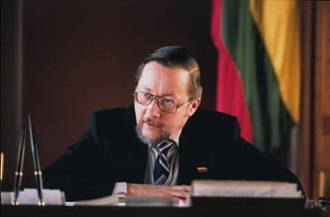


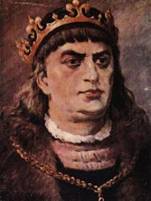



















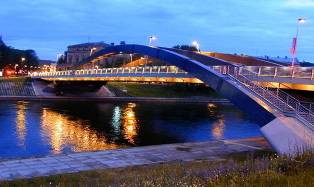
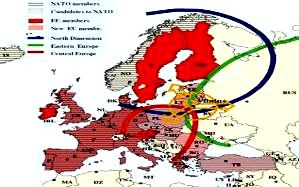





















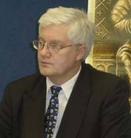



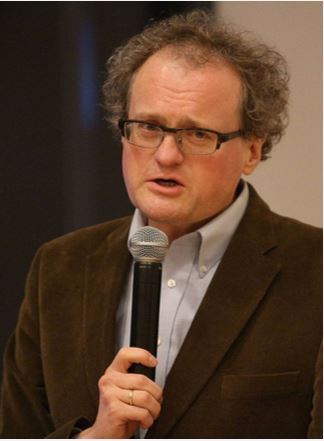
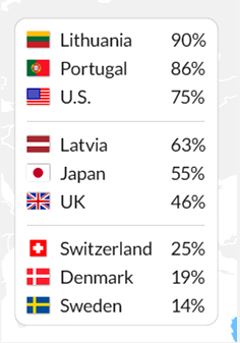
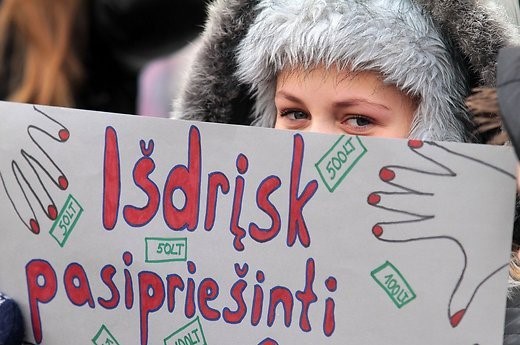


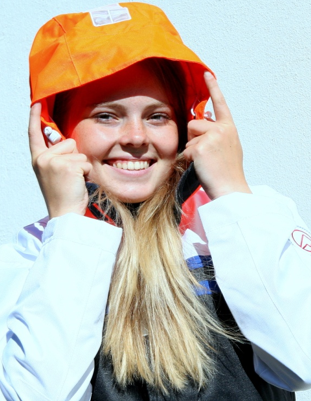
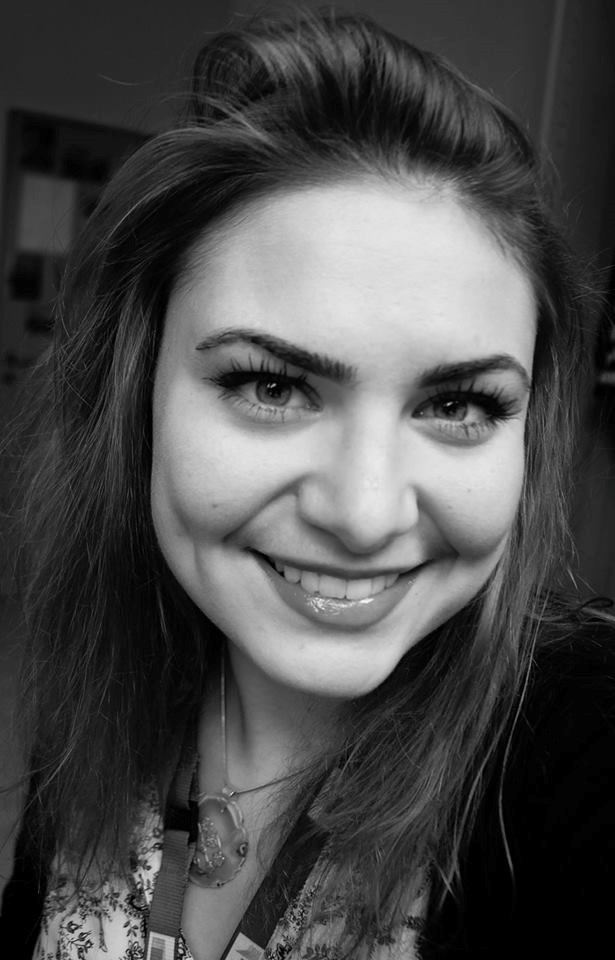
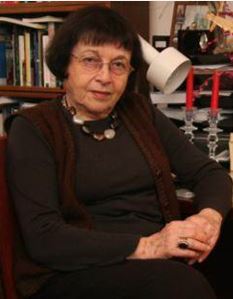
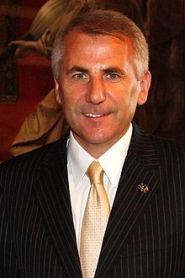
.jpg)
